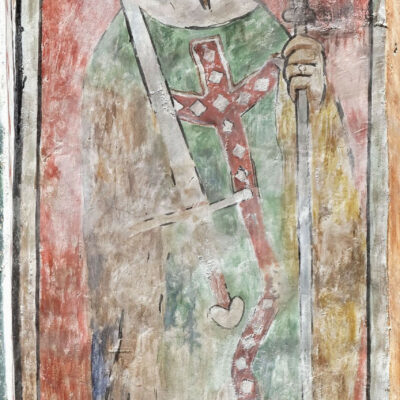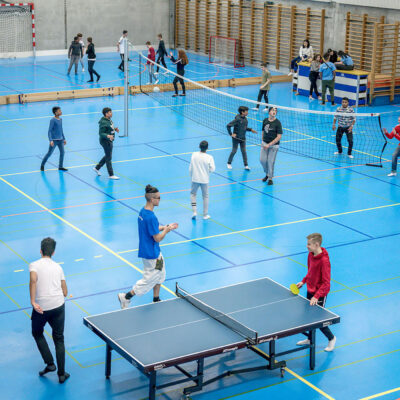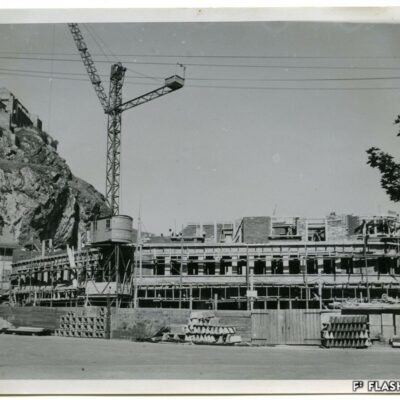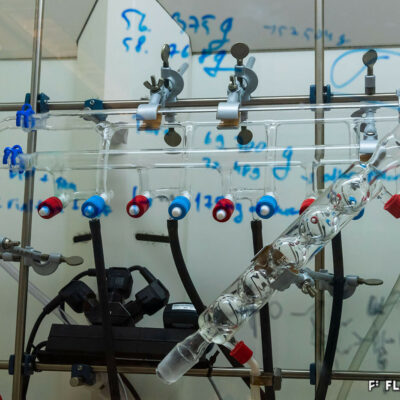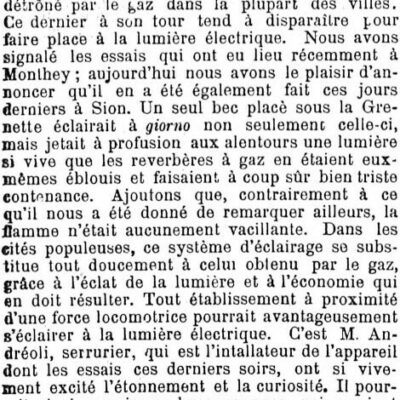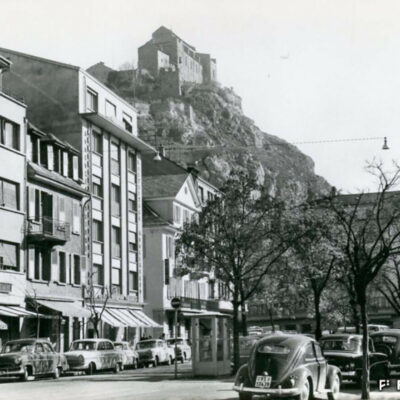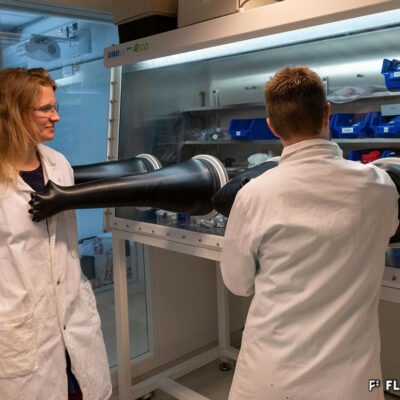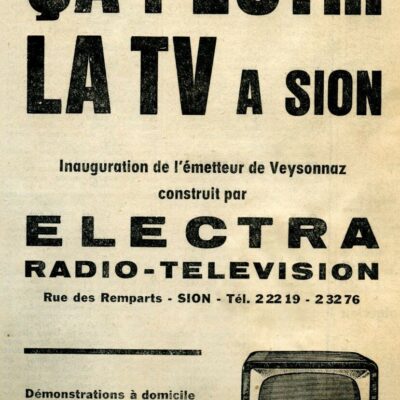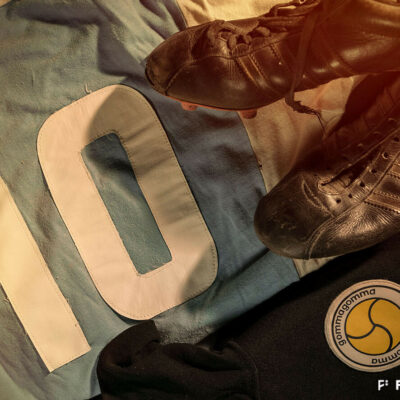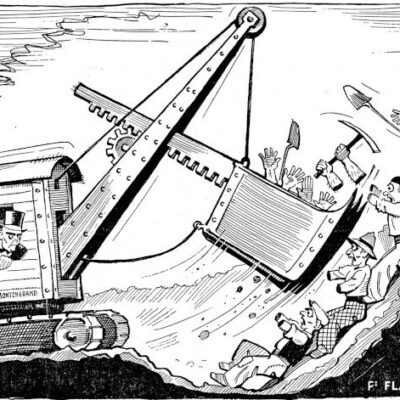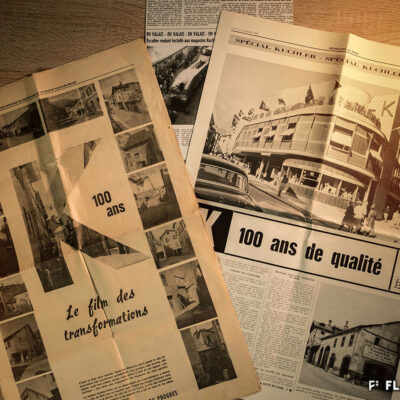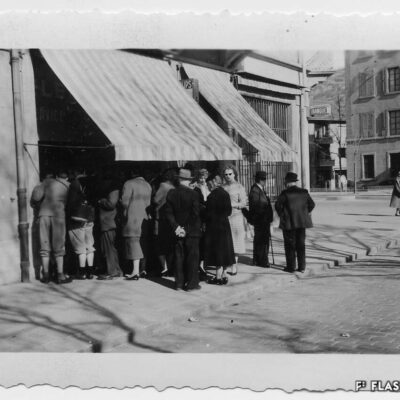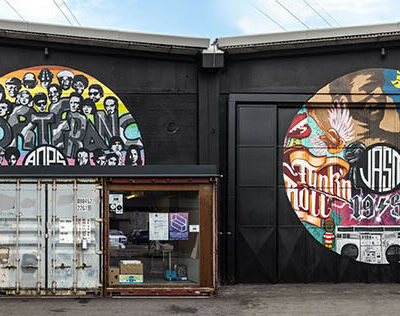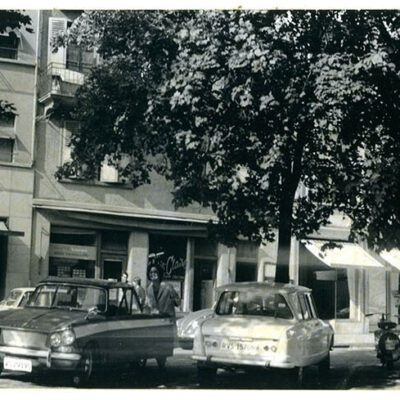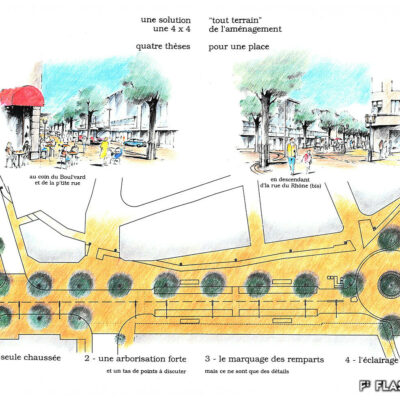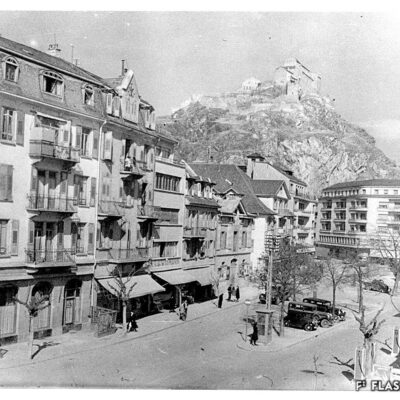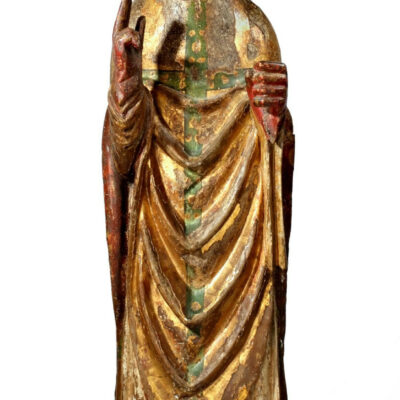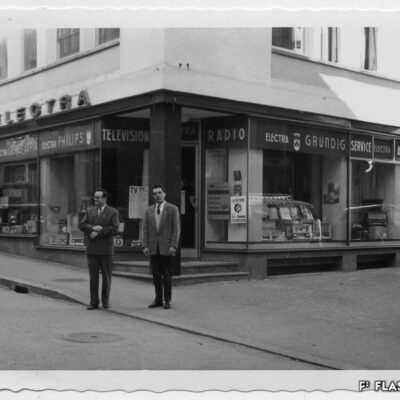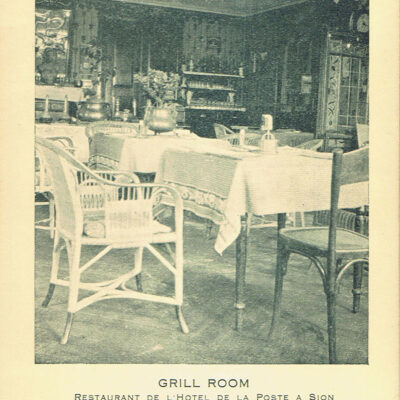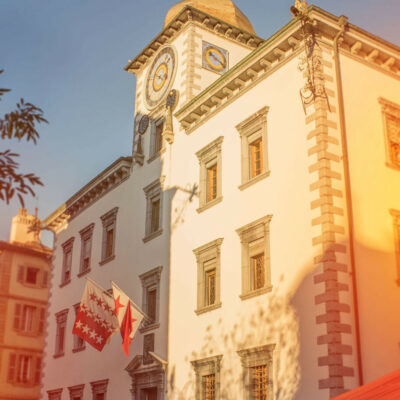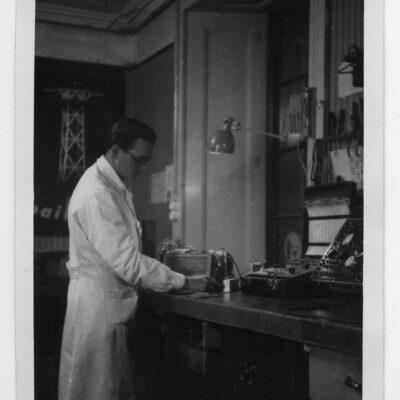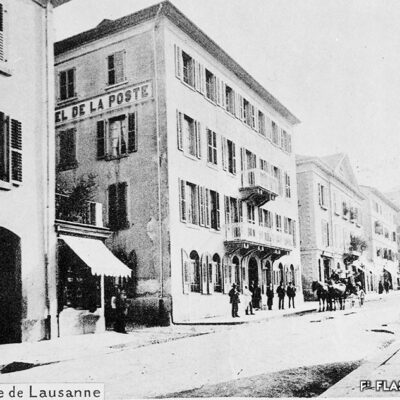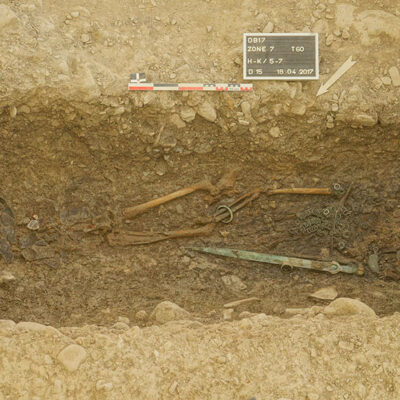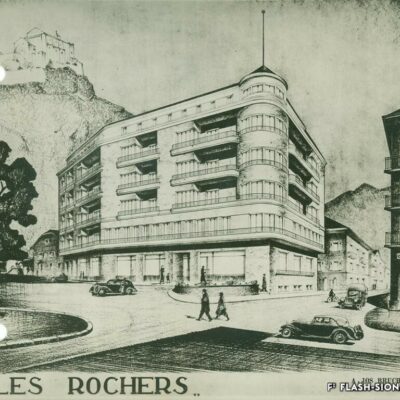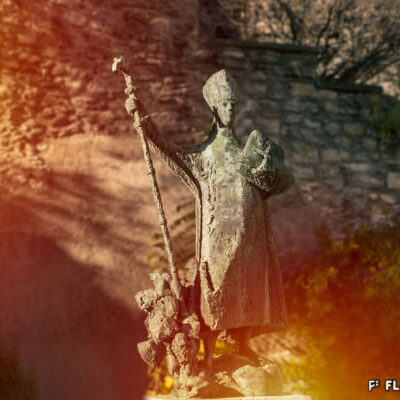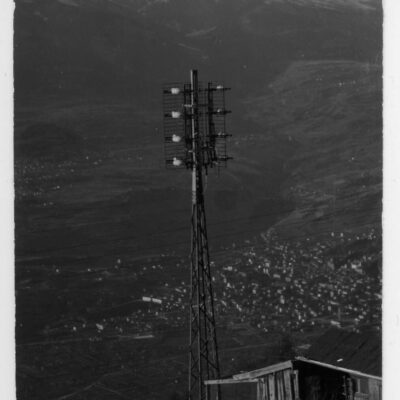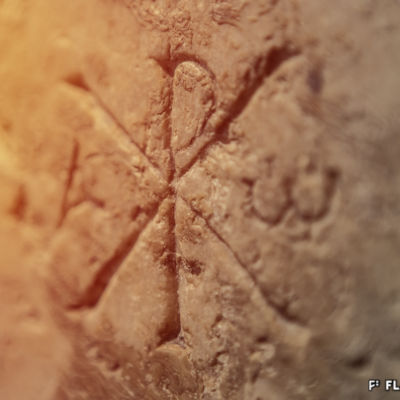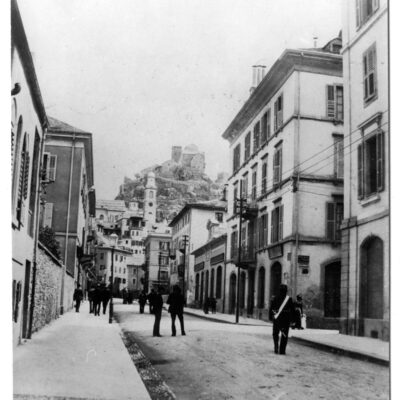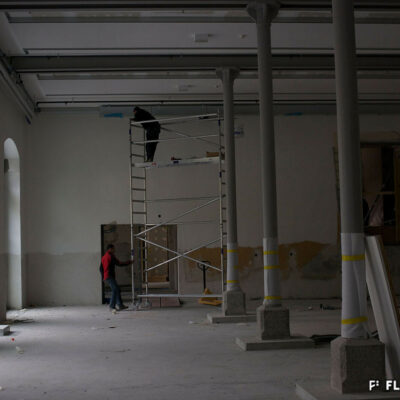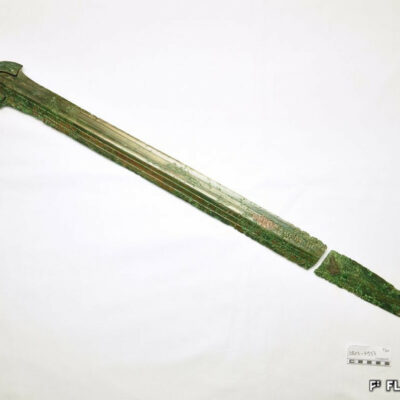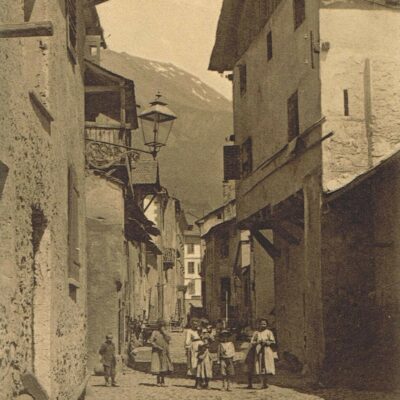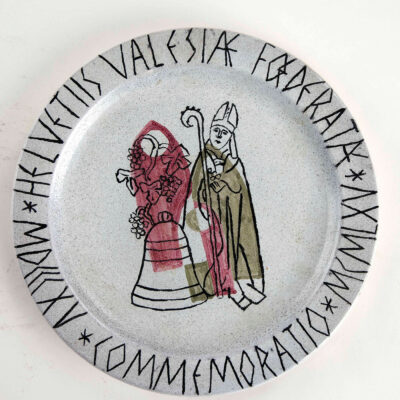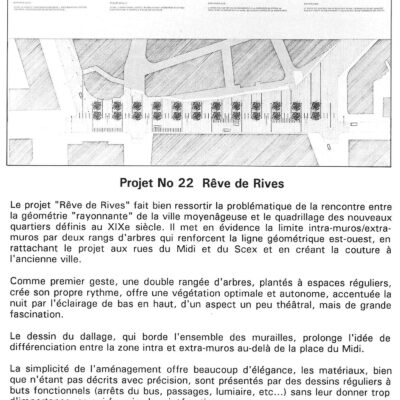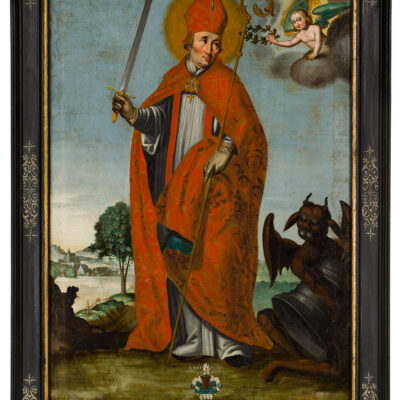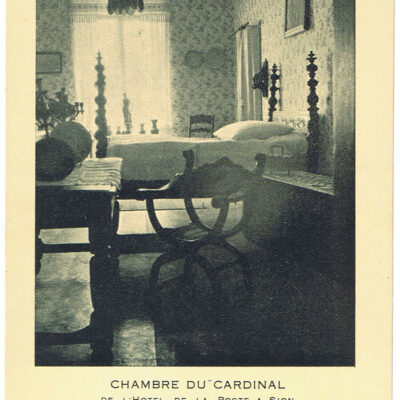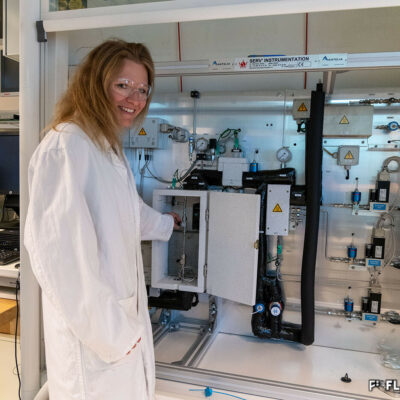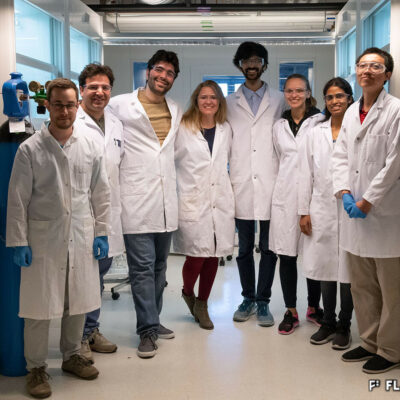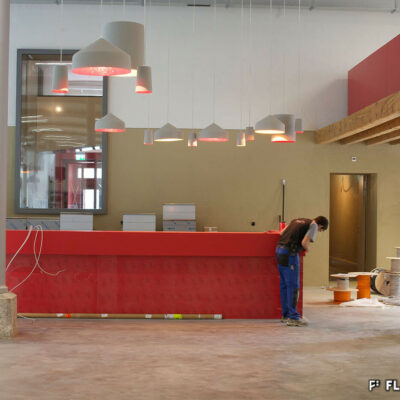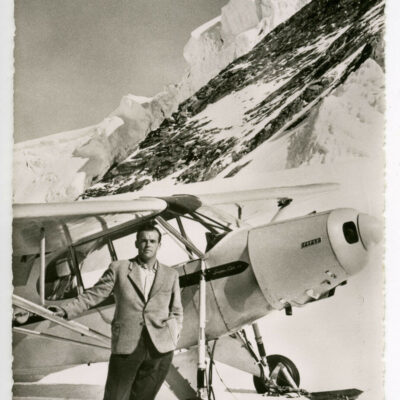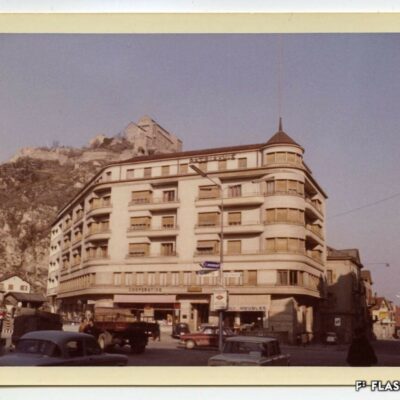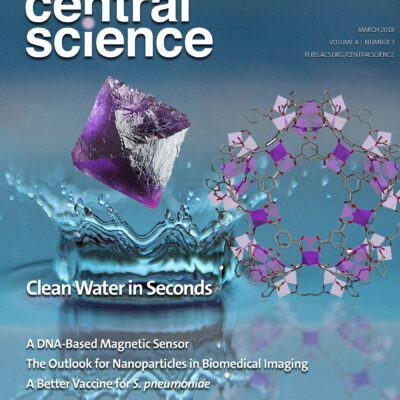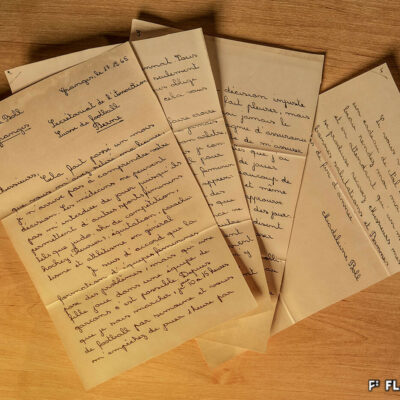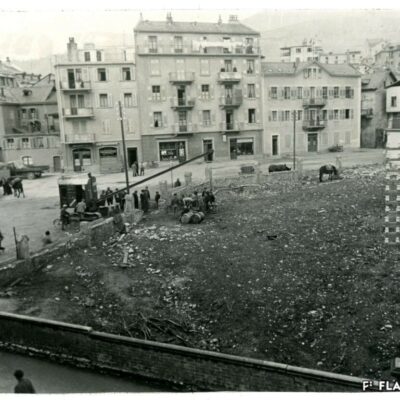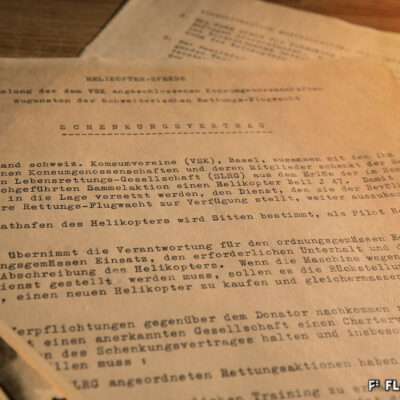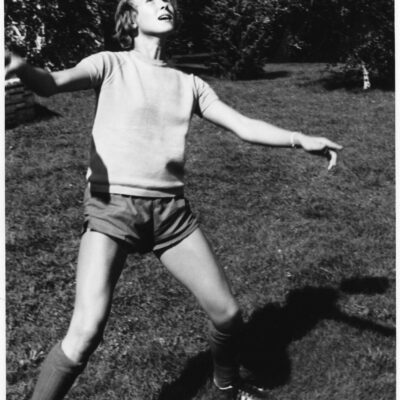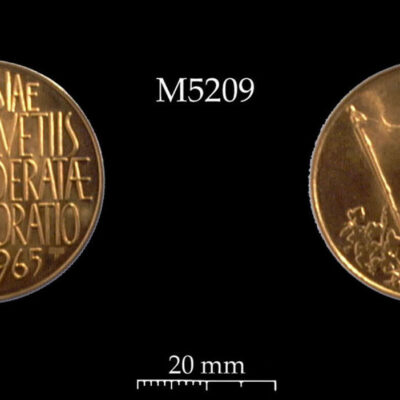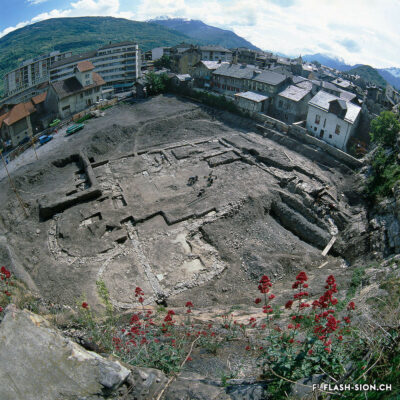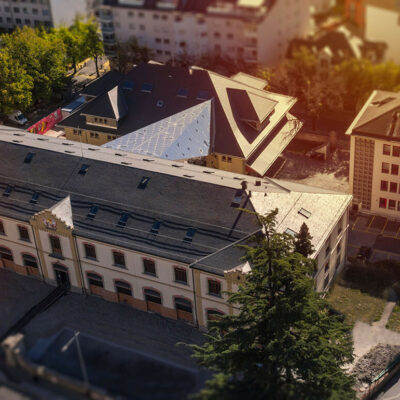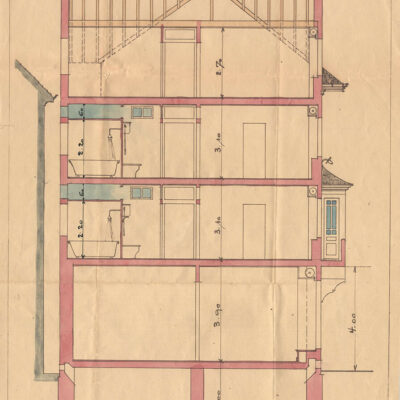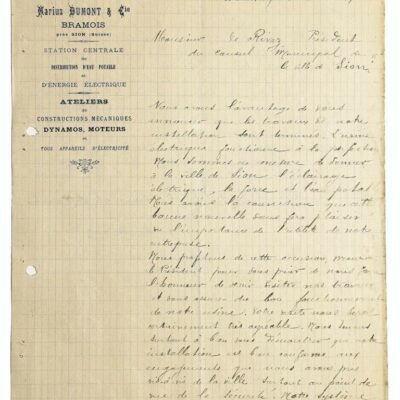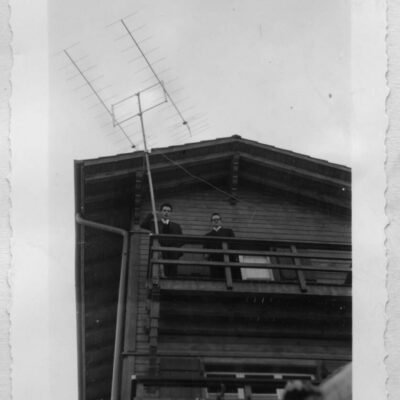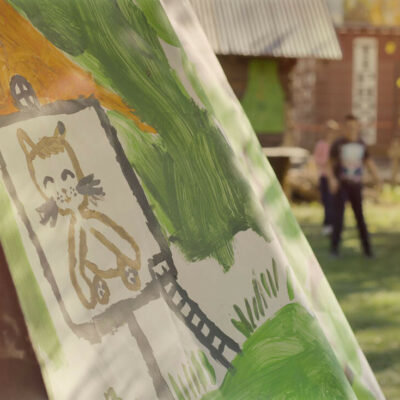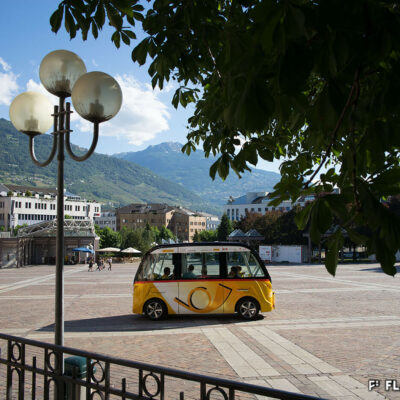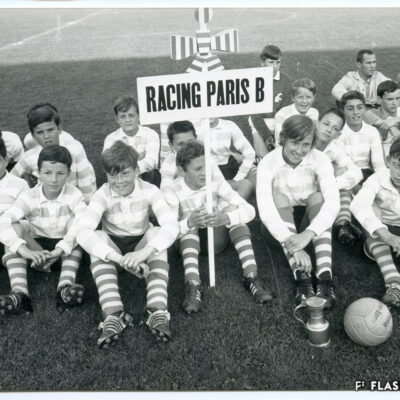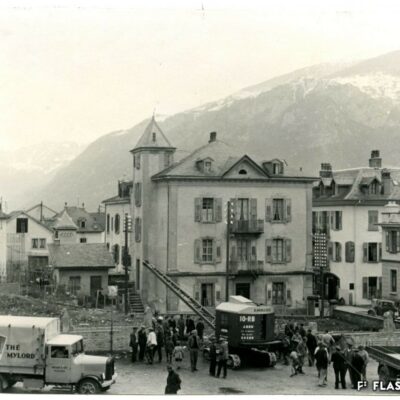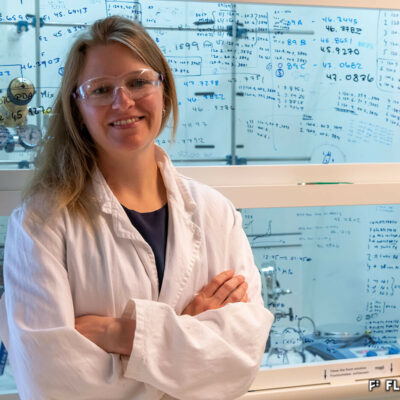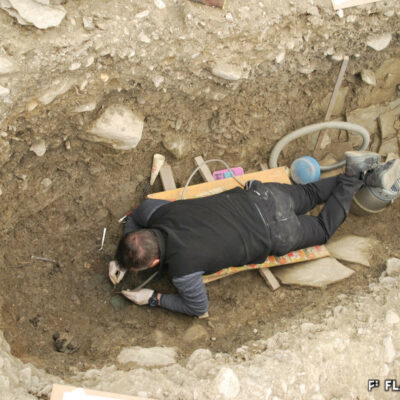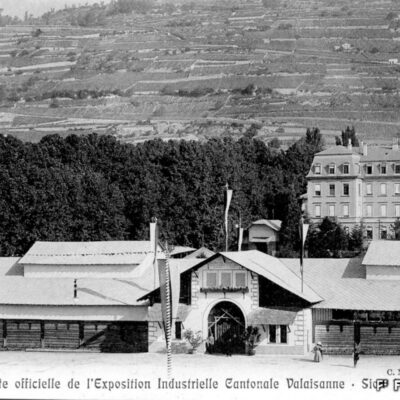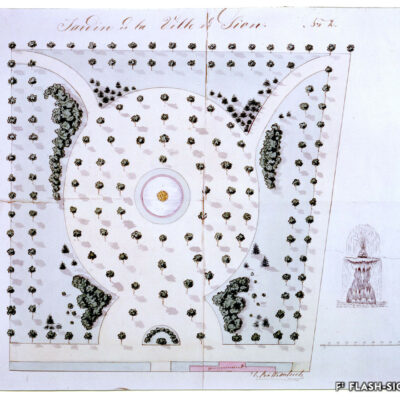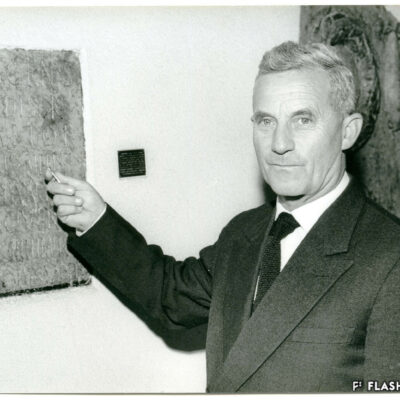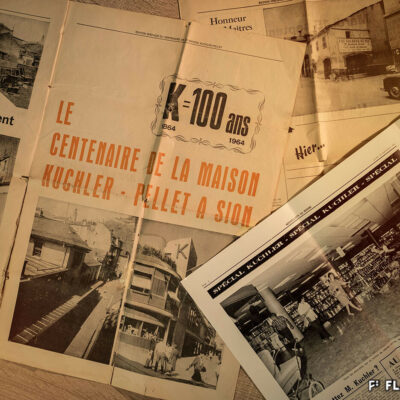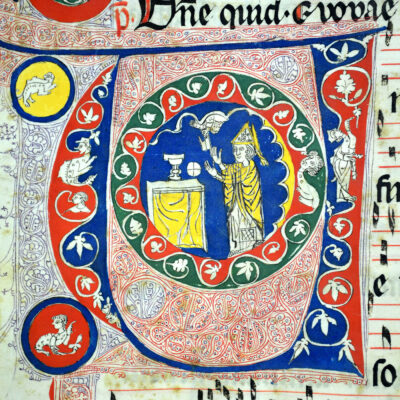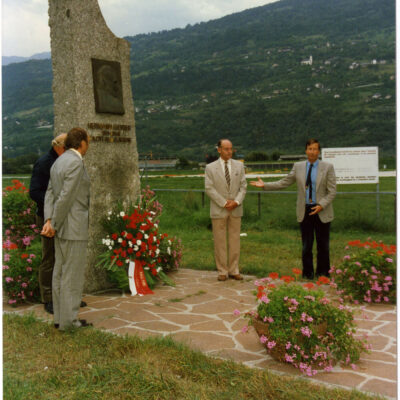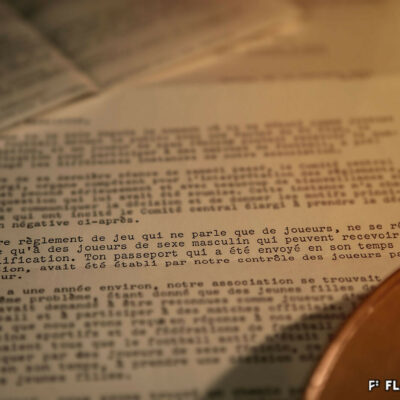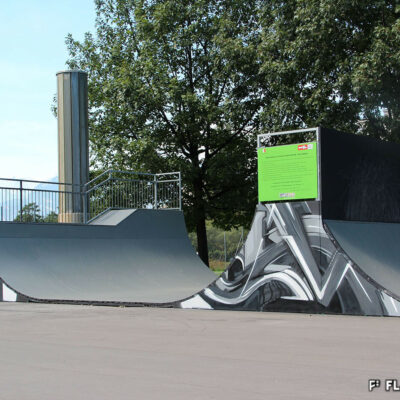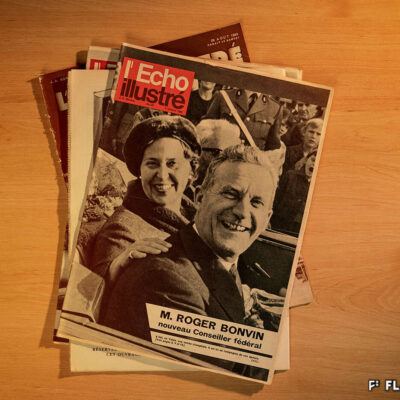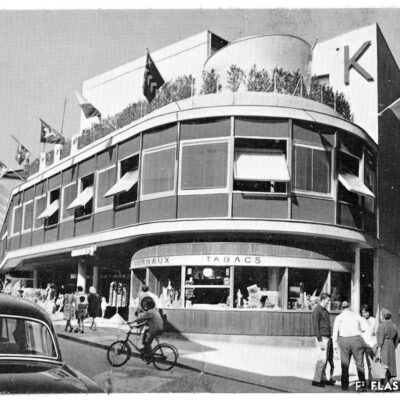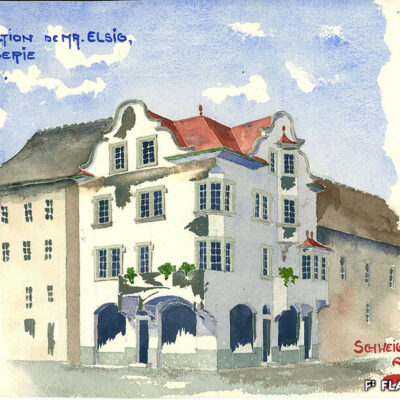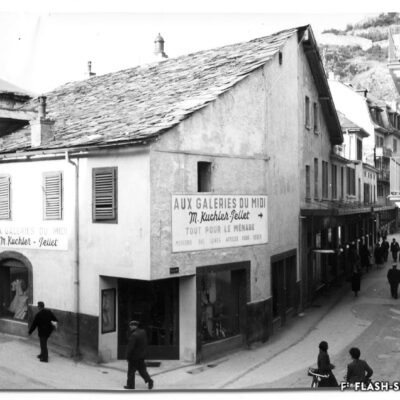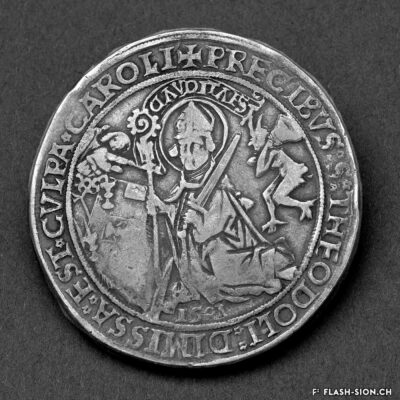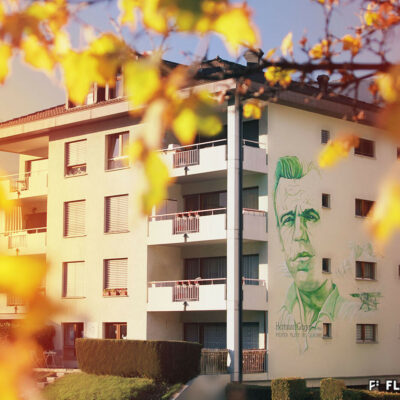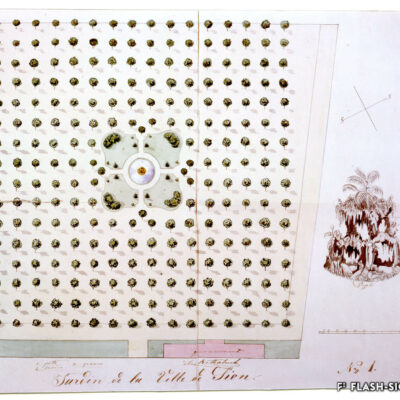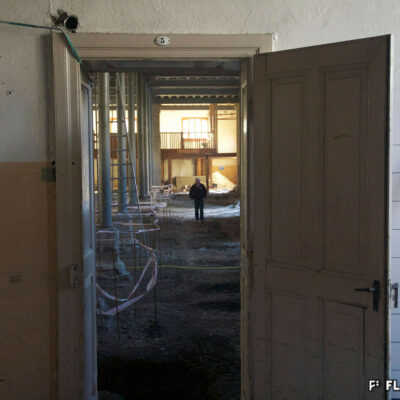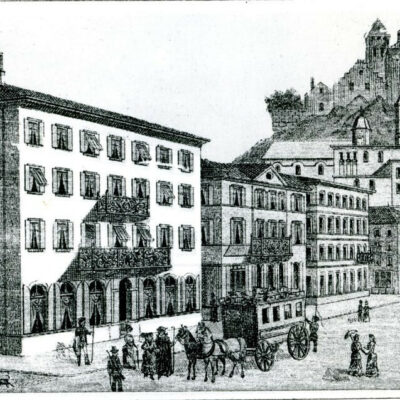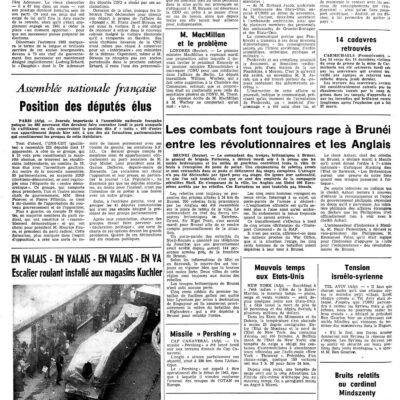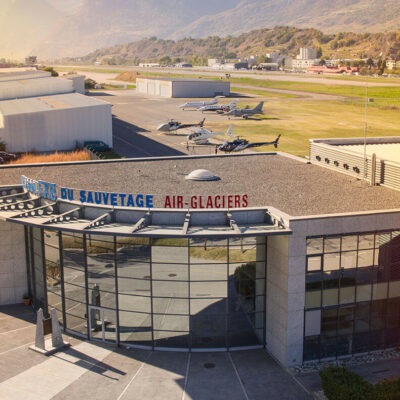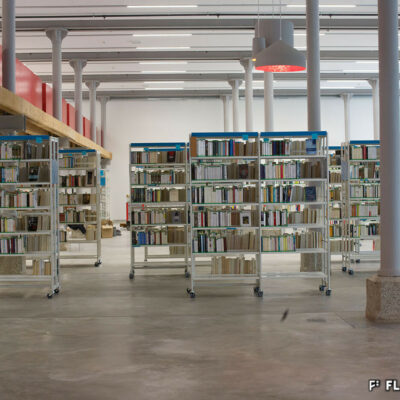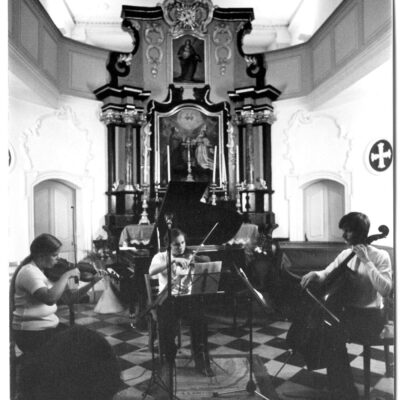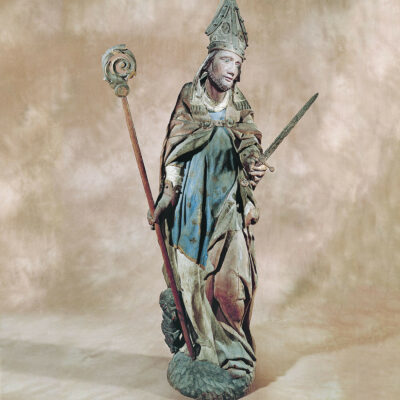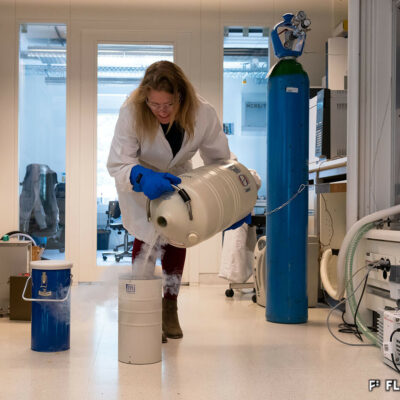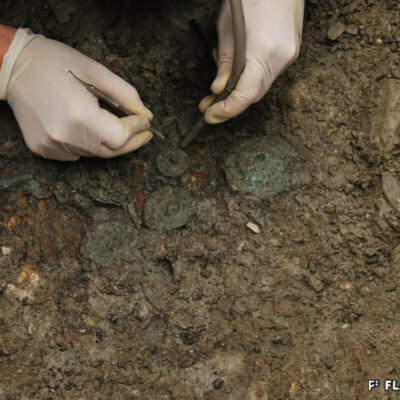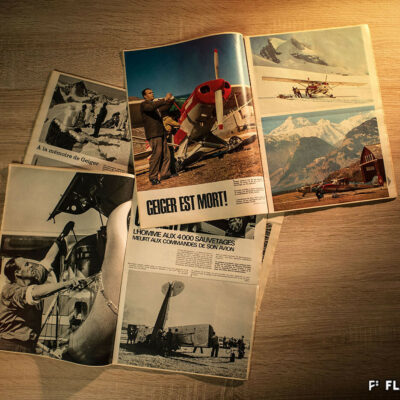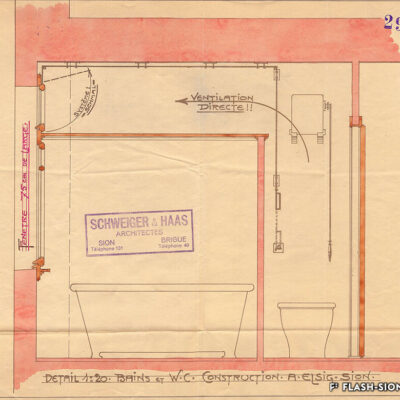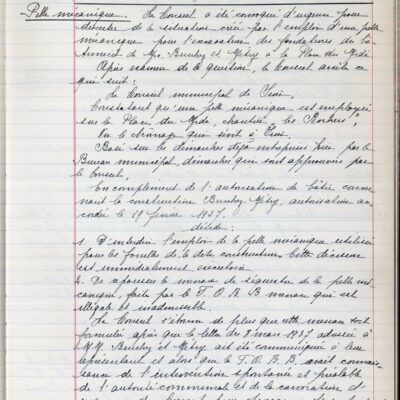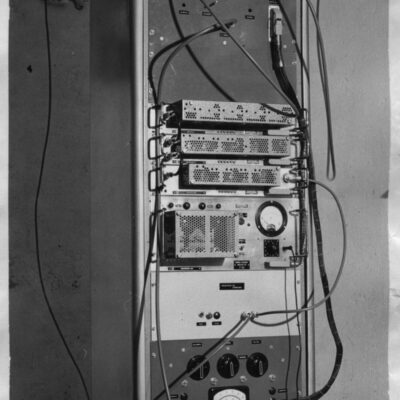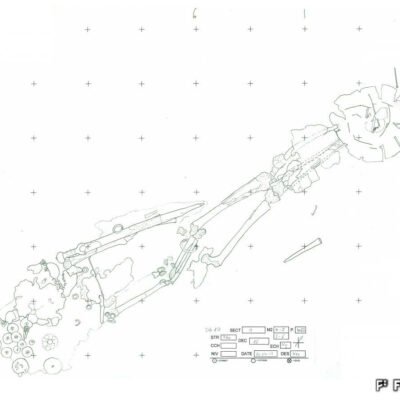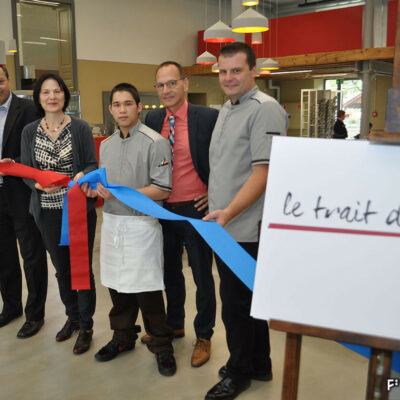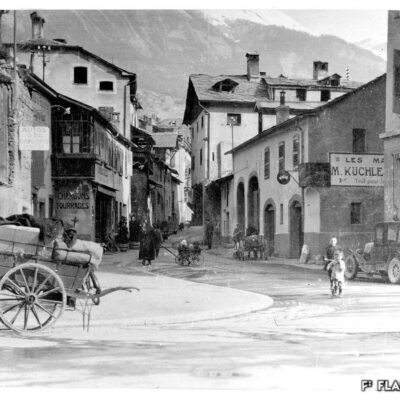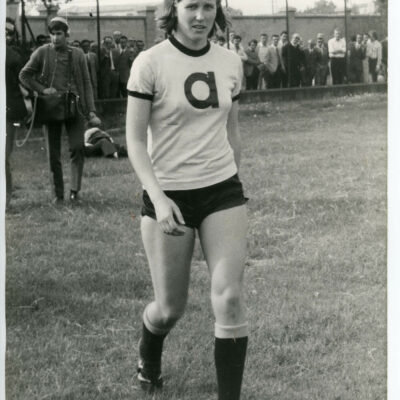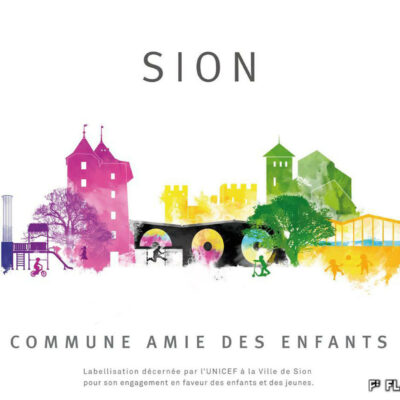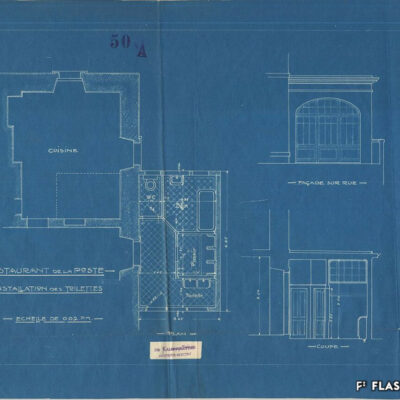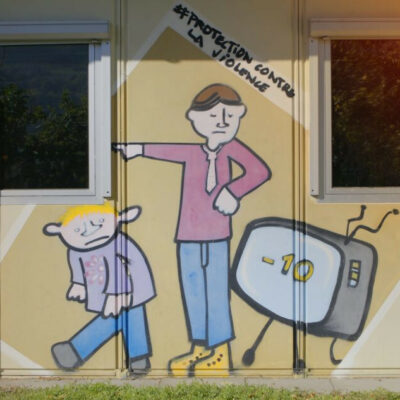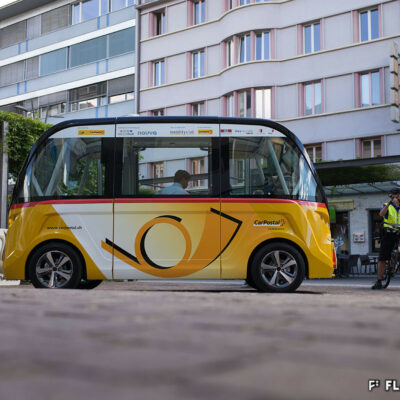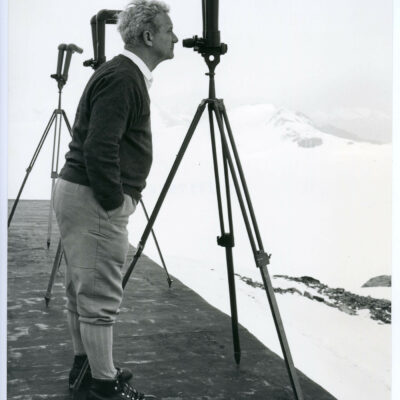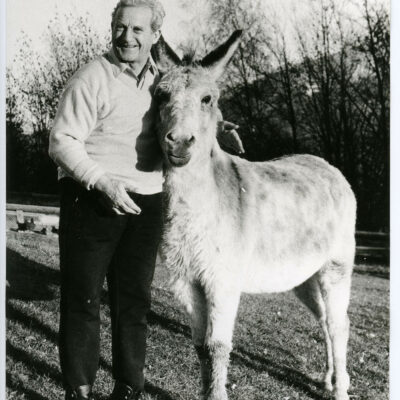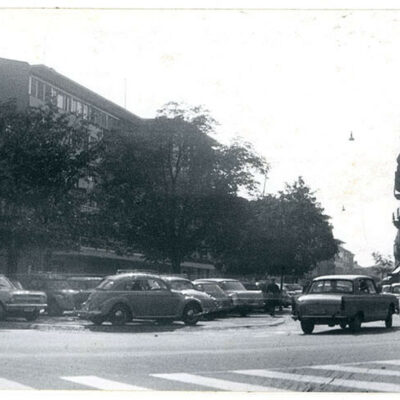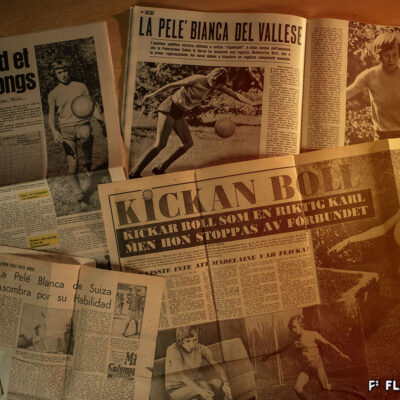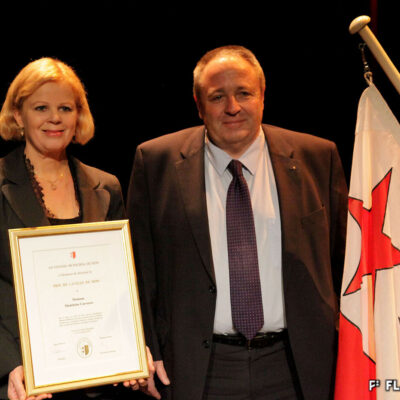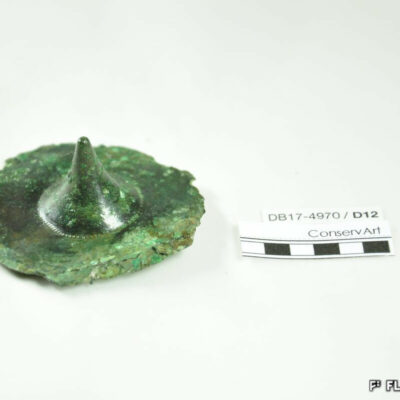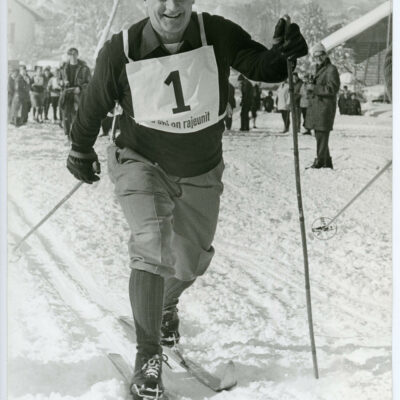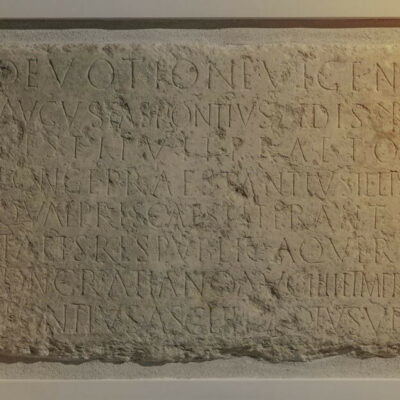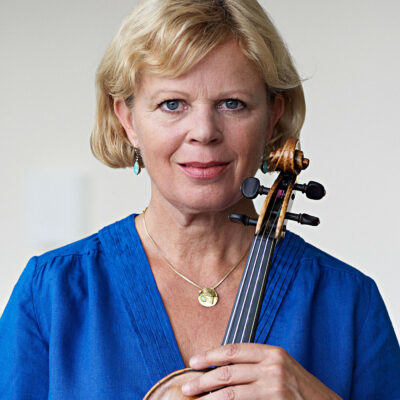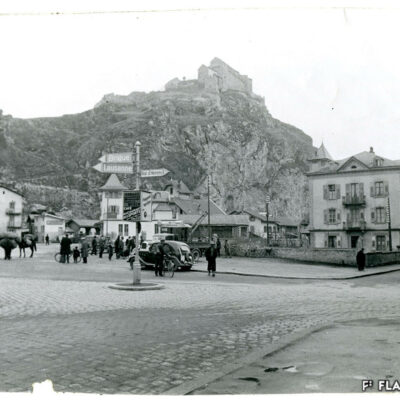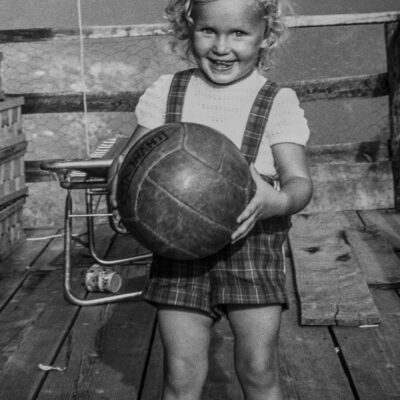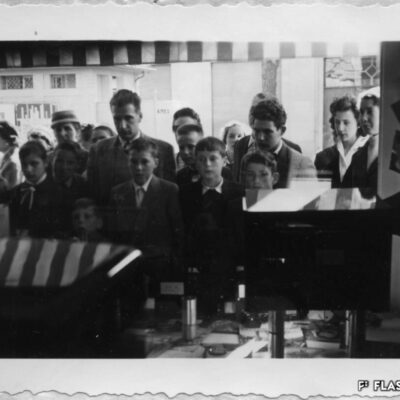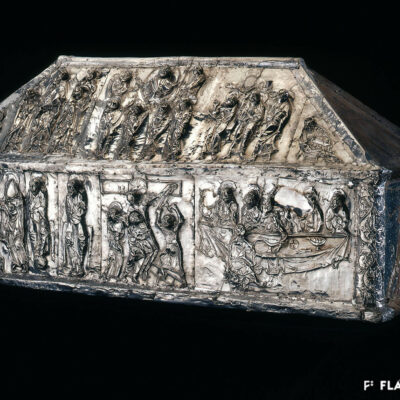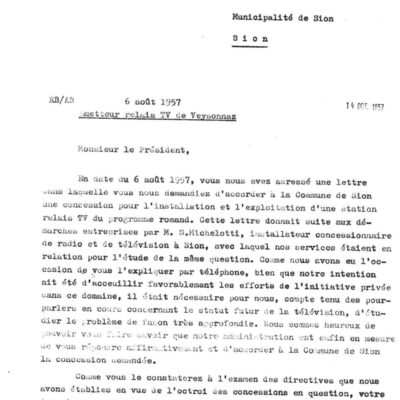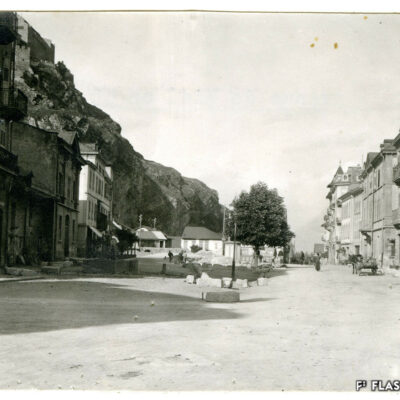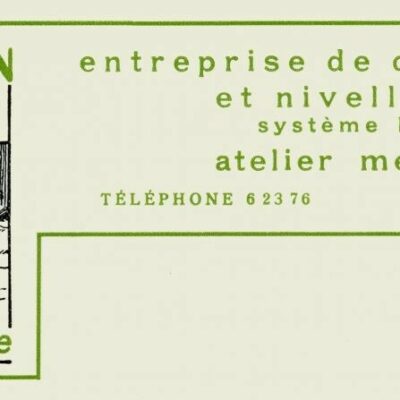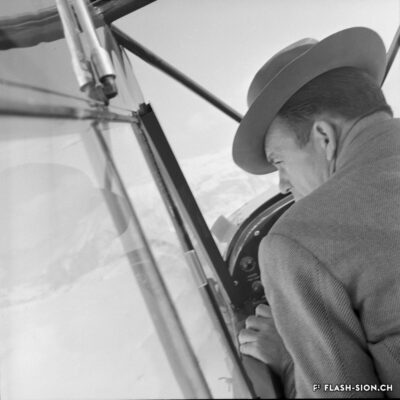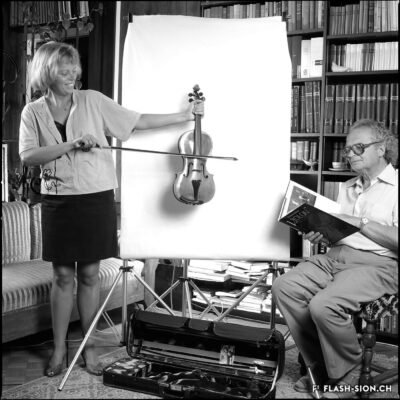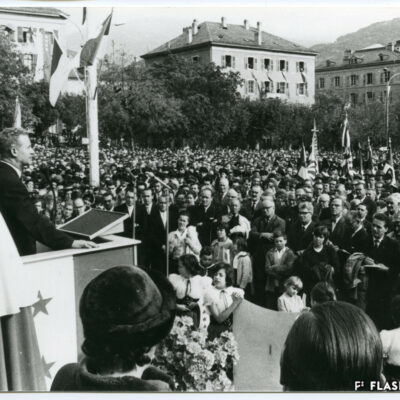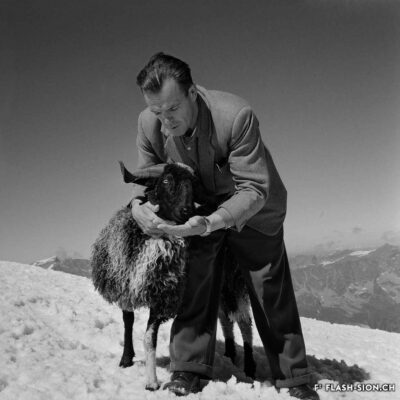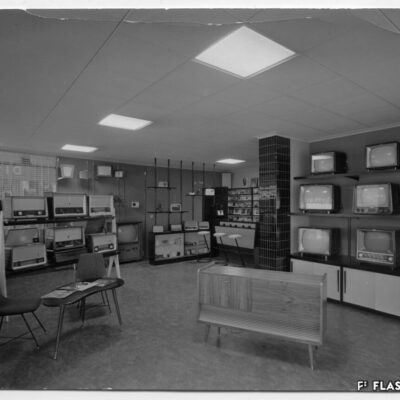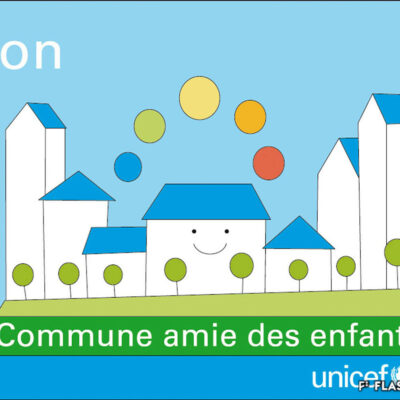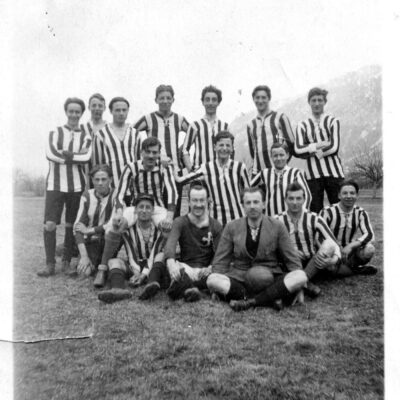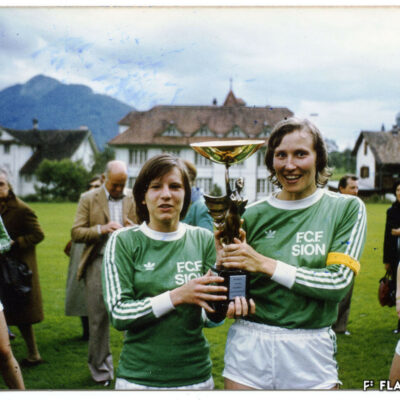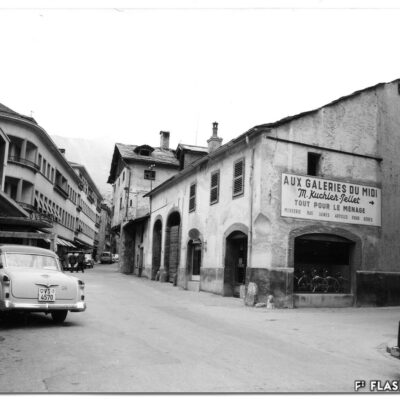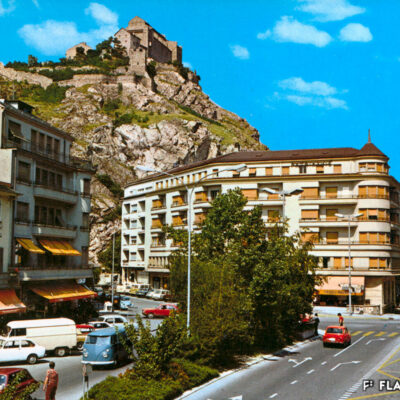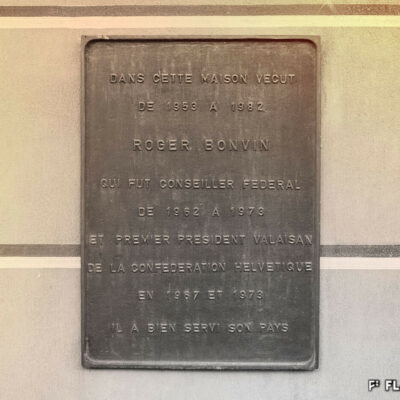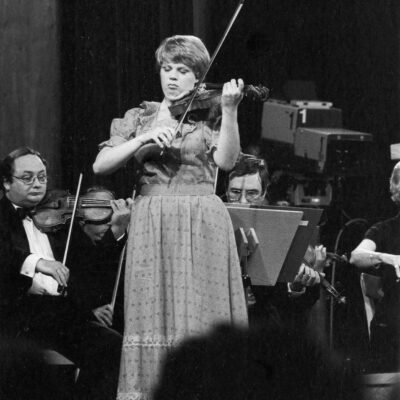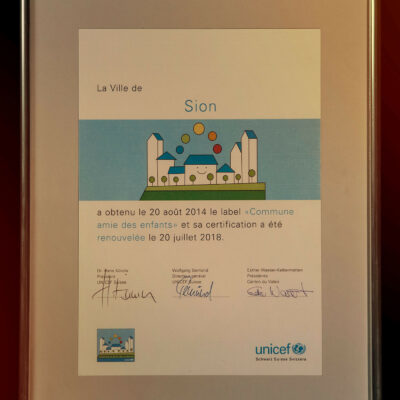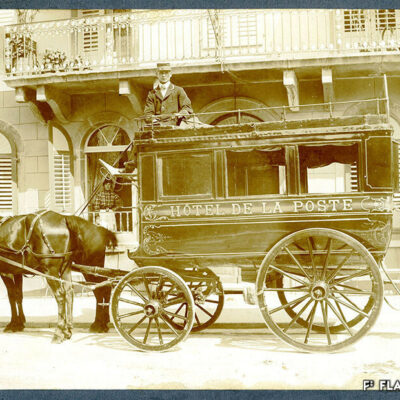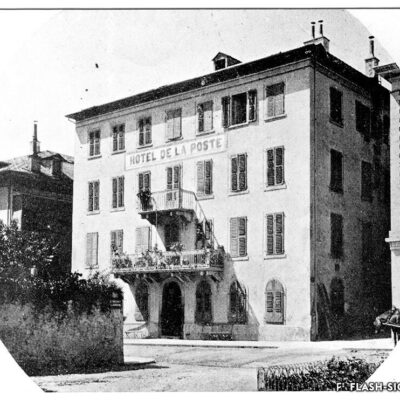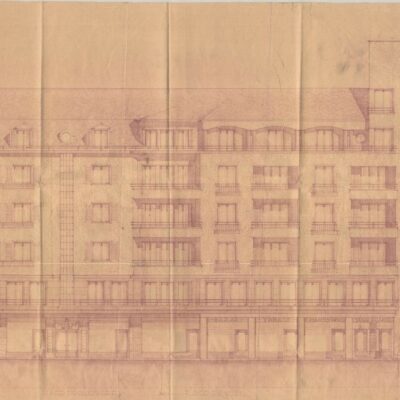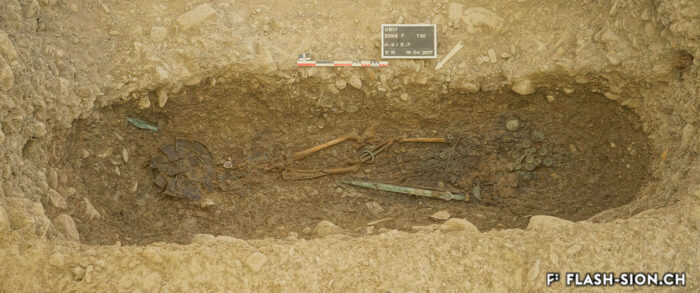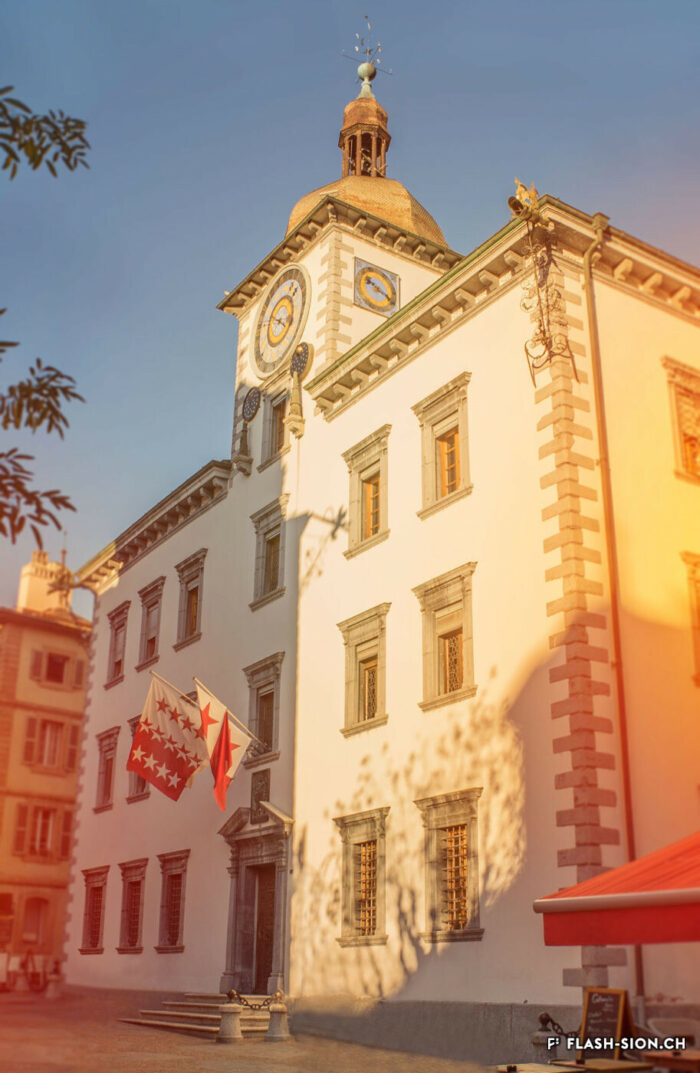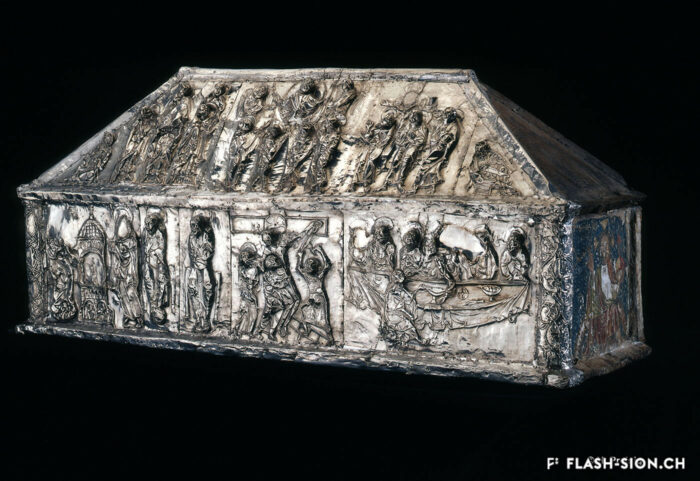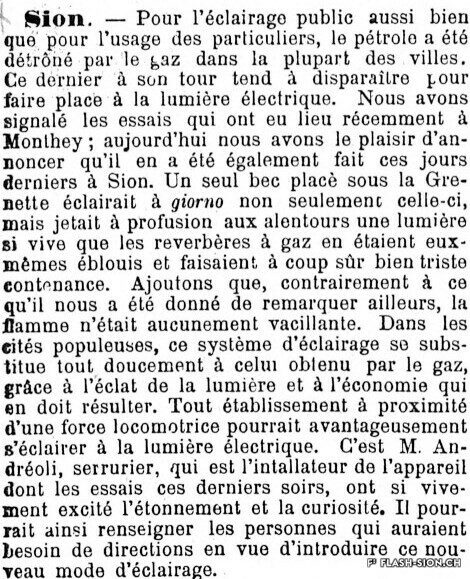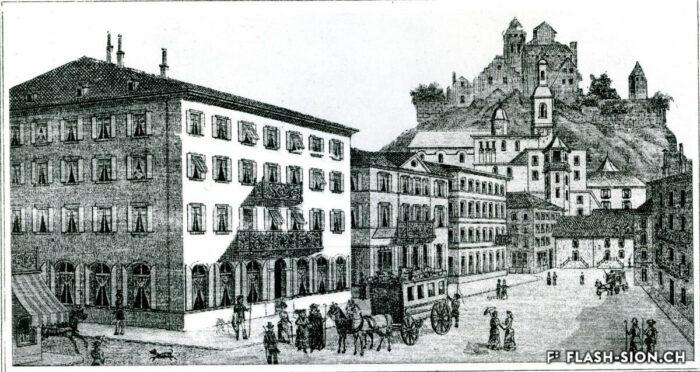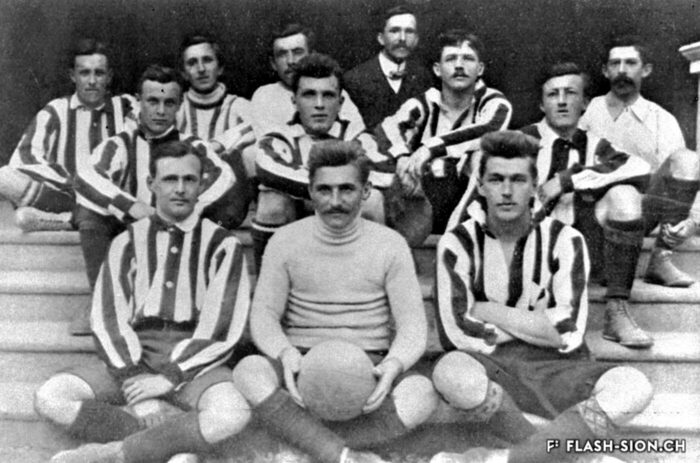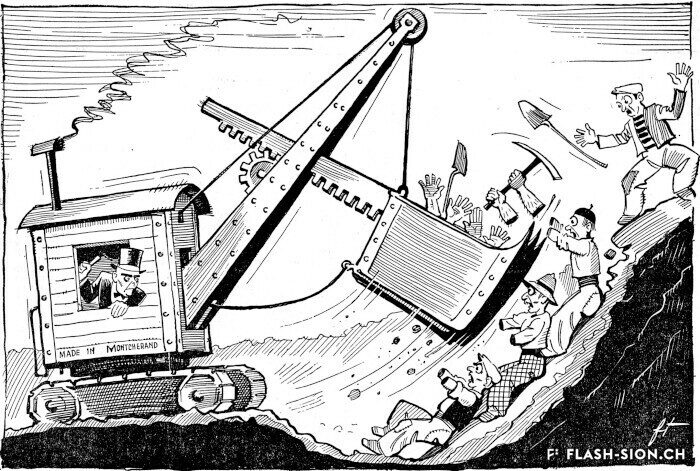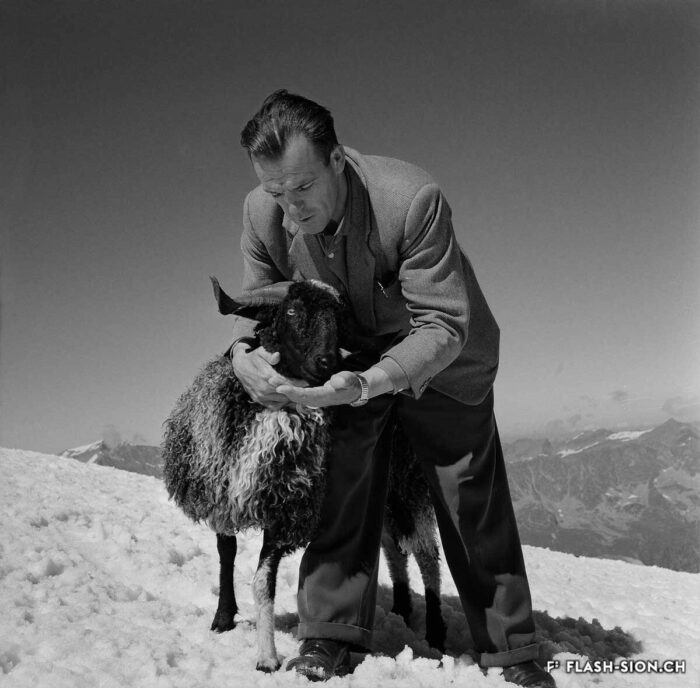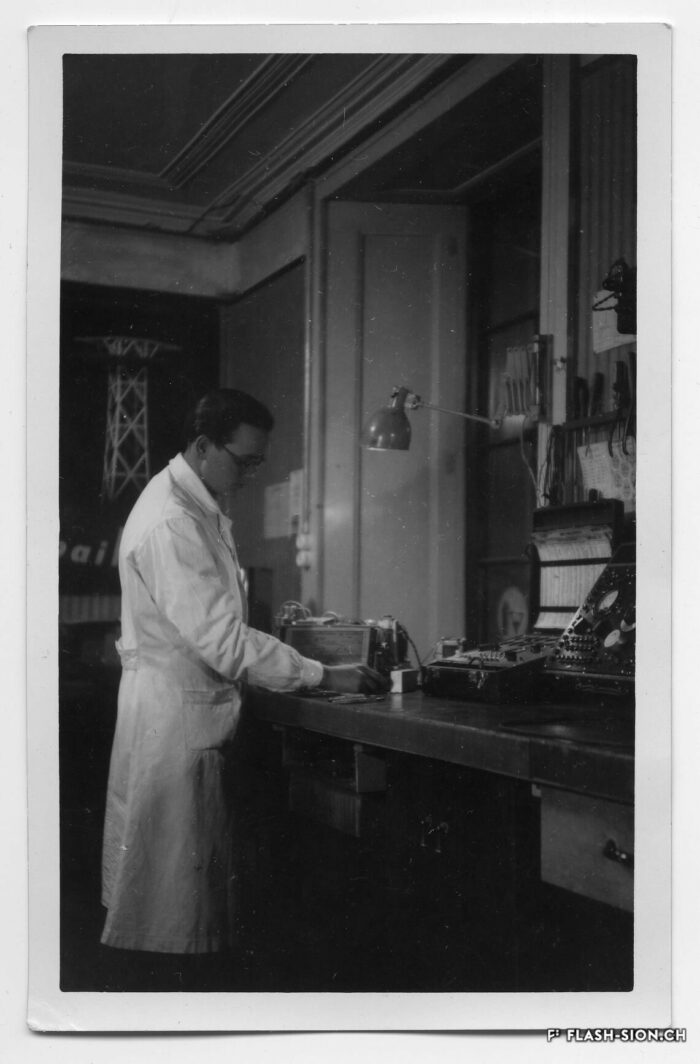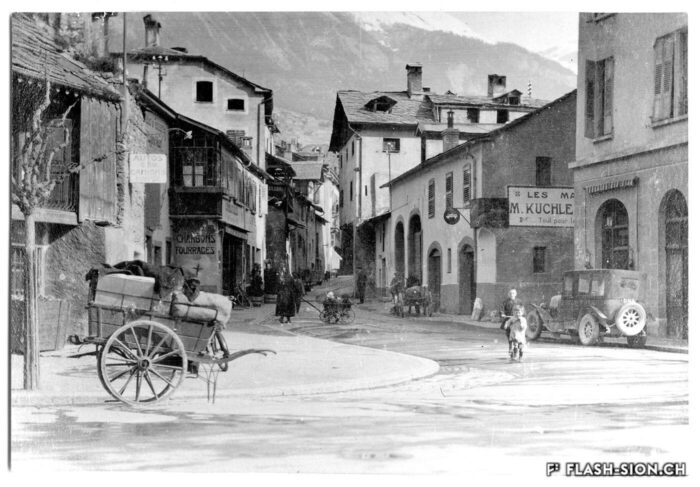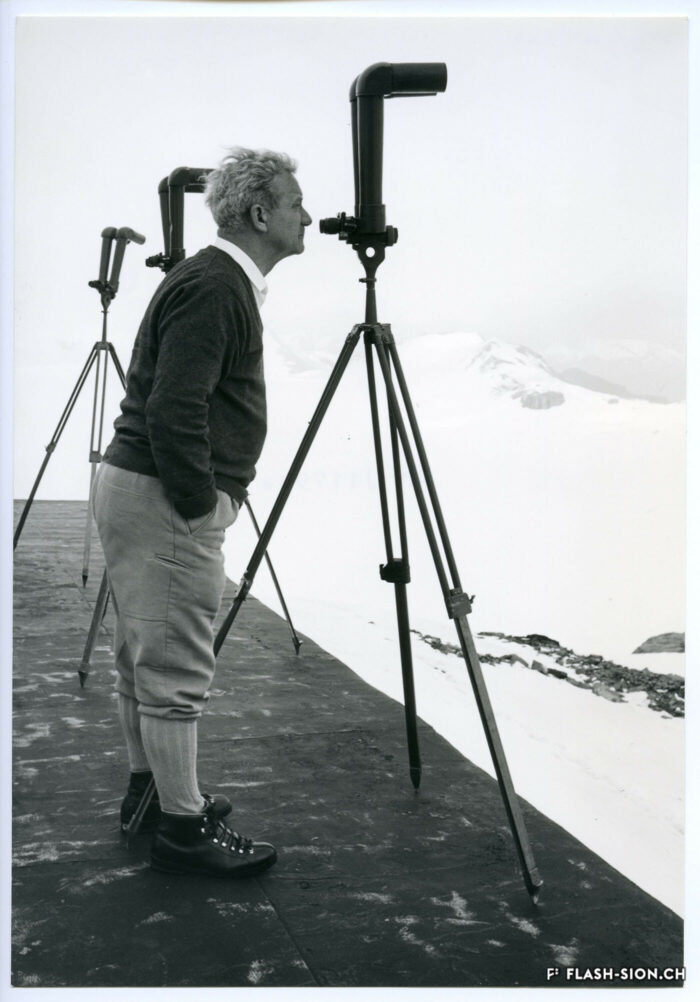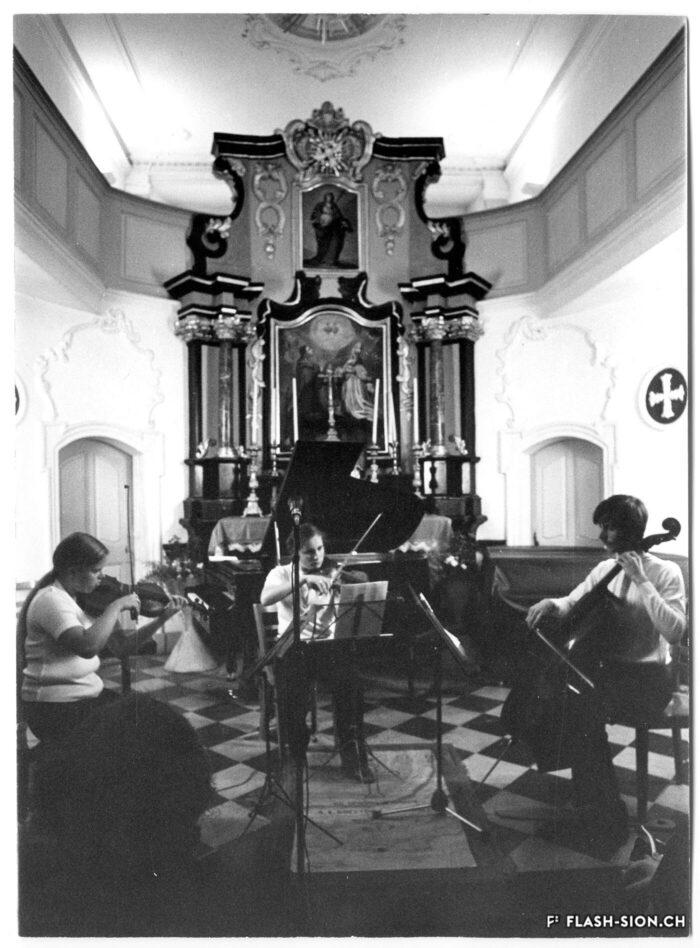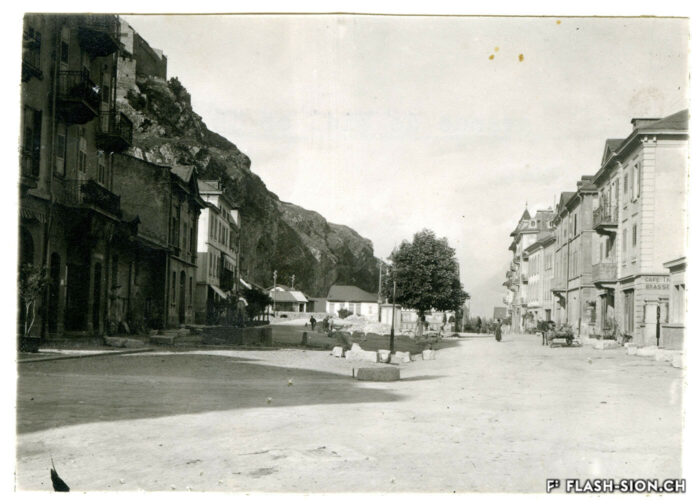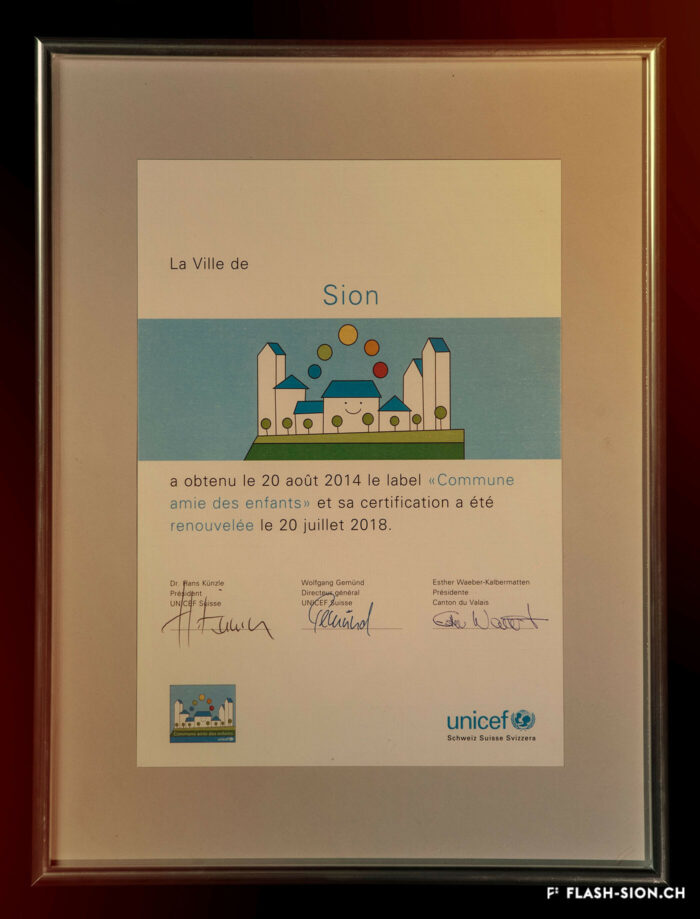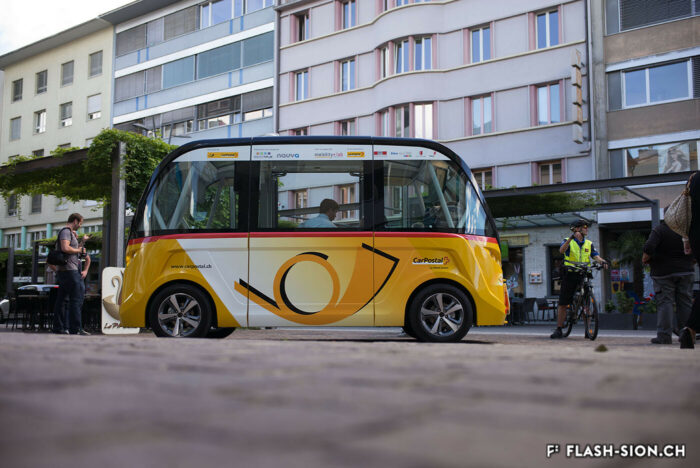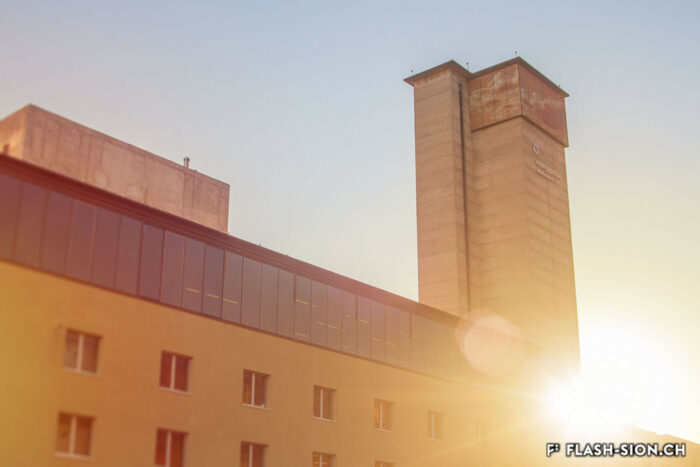Sion marche sur ses tombes
Après la découverte unique en Suisse d’une inhumation d’un guerrier richement paré datant de 850 avant J.-C. au printemps 2017, la mise au jour d’un dolmen continue de passionner les archéologues menant les fouilles sur le site de la nécropole de Don Bosco à l’été 2018. Elle s’ajoute aux richesses archéologiques emblématiques et exceptionnelles et vient renforcer la renommée internationale dont jouit Sion dans le monde scientifique.
Verborgene Grabstätten auf Schritt und Tritt
Eine einmalige Entdeckung für die Schweiz: Im Frühjahr 2017 legten die zuständigen Archäologen im Grabungsbereich der Nekropole von Don Bosco ein Kriegergrab mit reicher Schmuckbeigabe aus der Zeit um 850 vor Christus frei. Nur gerade ein Jahr später, im Sommer 2018, erregte der Fund von imposanten Steinplatten eines Dolmens Aufsehen. Dieser bestätigt einmal mehr den aussergewöhnlichen und herausragenden, archäologischen Reichtum der Stadt und unterstreicht die internationale Bedeutung, die Sitten in wissenschaftlichen Kreisen zukommt.
Sion's buried treasures
In spring 2017, archaeologists were thrilled to discover a warrior’s grave with a rich assortment of artefacts dating from 850 B.C. – the only one of its type in Switzerland. Excitement continued when a dolmen was found during excavations on the site of the Don Bosco necropolis in summer 2018. This find adds to the city’s exceptional archaeological heritage of iconic treasures, consolidating Sion’s international reputation in the scientific world.
Sion marche sur ses tombes
Après la découverte unique en Suisse d’une inhumation d’un guerrier richement paré datant de 850 avant J.-C. au printemps 2017, la mise au jour d’un dolmen continue de passionner les archéologues menant les fouilles sur le site de la nécropole de Don Bosco à l’été 2018. Elle s’ajoute aux richesses archéologiques emblématiques et exceptionnelles et vient renforcer la renommée internationale dont jouit Sion dans le monde scientifique.
La trace d’Asclépiodote
La plus ancienne inscription chrétienne connue au nord des Alpes se trouve à Sion. Lorsque le visiteur passe la porte richement sculptée de l’hôtel de ville, il découvre, sur les murs du vestibule, scellé parmi d’autres plaques de pierre gravées remontant pour la plupart à l’époque romaine, une inscription ayant toute son importance : un chrisme ornant la dédicace de la restauration d’un bâtiment par le gouverneur de la province, Pontius Asclepiodotus, datée de 377.
Auf der Spur von Asklepiodotus
Die älteste bekannte christliche Inschrift nördlich der Alpen befindet sich in Sitten. Öffnet sich die reich geschnitzte Türe des Rathauses, entdeckt man an den Wänden der Eingangshalle verschiedene, gravierte Steinplatten. Die meisten darunter stammen aus der Römerzeit. Eine ganz spezielle Bedeutung kommt der Inschrift zu, die der römische Provinzstatthalter, Pontius Asklepiodotus, im Jahr 377 n.Chr. herstellen liess. Die Widmung zur Restaurierung eines Gebäudes durch den hohen Beamten trägt ein Christusmonogramm.
Asclepiodotus left his mark
The oldest known Christian inscription north of the Alps is to be found in Sion. Visitors passing through the elaborately sculpted door of the town hall will see that the walls of the entrance lobby are adorned with engraved stone tablets that mostly date from the Roman era. Among them is one particularly important inscription: a dedicatory monogram marking the restoration of a building by Pontius Asclepiodotus, governor of the province, dating from 377.
La trace d’Asclépiodote
La plus ancienne inscription chrétienne connue au nord des Alpes se trouve à Sion. Lorsque le visiteur passe la porte richement sculptée de l’hôtel de ville, il découvre, sur les murs du vestibule, scellé parmi d’autres plaques de pierre gravées remontant pour la plupart à l’époque romaine, une inscription ayant toute son importance : un chrisme ornant la dédicace de la restauration d’un bâtiment par le gouverneur de la province, Pontius Asclepiodotus, datée de 377.
Le Saint, la cloche et le diablotin
Figure de légende symbolisée par la grappe de raisin, la cloche et le diablotin, et personnage historique détenteur des pouvoirs religieux et civil que représentent la crosse et l’épée, Théodore fut le premier évêque attesté du Valais, sous le nom de Théodule. Contemporain de l’introduction du christianisme chez nous au IVe siècle, sa figure revêtit au fil du temps une importance politique croissante pour l’église sédunoise et le culte qu’on lui vouait connut une grande ferveur populaire.
Der Heilige, die Glocke und der Teufel
Weintraube, Glocke und Teufel symbolisieren die zur Legende gewordene Gestalt des hl. Theodor. Unter dem Namen Theodul gilt er als erster, bekannter Bischof des Wallis und trägt Bischofsstab und Schwert als Zeichen der kirchlichen und weltlichen Macht. Er hatte die Bischofswürde im 4. Jahrhundert inne, gleichzeitig mit der Einführung des Christentums im Wallis. Für die Kirche von Sitten nahm seine Figur im Laufe der Zeit eine wachsende politische Bedeutung ein. Im weit verbreiteten Theoduls-Kult widerspiegelte sich die grosse Verehrung des Heiligen.
The saint, the bell and the little devil
Theodore is a legendary figure whose symbols are a bunch of grapes, a bell and a small devil; he was also a historical figure who held religious and civil authority, represented by the crook and the sword. Theodore was the first attested Bishop of Valais, serving under the name of Theodulus during the period when Christianity was introduced to our region in the 4th century. Over time, Theodore acquired growing political importance for the church in Sion, and he was venerated as a figure who inspired great enthusiasm among the people.
Le Saint, la cloche et le diablotin
Figure de légende symbolisée par la grappe de raisin, la cloche et le diablotin, et personnage historique détenteur des pouvoirs religieux et civil que représentent la crosse et l’épée, Théodore fut le premier évêque attesté du Valais, sous le nom de Théodule. Contemporain de l’introduction du christianisme chez nous au IVe siècle, sa figure revêtit au fil du temps une importance politique croissante pour l’église sédunoise et le culte qu’on lui vouait connut une grande ferveur populaire.
Et la lumière fut
Le premier essai d’éclairage public électrique à Sion a lieu en mars 1884 à la Grenette. Amenés à remplacer les réverbères à gaz, une douzaine de lampadaires de huit mètres de haut sont déjà installés une dizaine d’années plus tard. Ce n’est qu’en 1896 que l’éclairage public se démocratise dans les rues du Grand-Pont, de Lausanne et du Rhône suite à la construction de l’usine électrique de Marius Dumont à Bramois et de son réseau de fils électriques à travers Sion.
Und es ward Licht
Der erste Test zur Elektrifizierung der Straßenbeleuchtung von Sitten fand im März 1884 bei der ehemaligen Markthalle „La Grenette“ statt. Bereits zehn Jahre später ersetzte ein Dutzend acht Meter hohe Straßenlaternen die ersten Gaslaternen. Zur Generalisierung der öffentlichen Beleuchtung auf dem Grand-Pont, in der Rue de Lausanne und der Rue du Rhône kommt es jedoch erst 1896 nach dem Bau des Wasserkraftwerkes von Marius Dumont und der Installation seiner Stromversorgung in den Strassen Sittens.
Let there be light
The first test of electric street lighting in Sion took place in March 1884 at La Grenette. Around twelve eight-metre-high streetlights were installed some ten years later to replace gas-fueled streetlights. It was not until 1896 that street lighting became more popular in the streets of Le Grand-Pont, Lausanne and du Rhône following the construction of Marius Dumont’s power factory in Bramois and its network of electric wires through Sion.
Et la lumière fut
Le premier essai d’éclairage public électrique à Sion a lieu en mars 1884 à la Grenette. Amenés à remplacer les réverbères à gaz, une douzaine de lampadaires de huit mètres de haut sont déjà installés une dizaine d’années plus tard. Ce n’est qu’en 1896 que l’éclairage public se démocratise dans les rues du Grand-Pont, de Lausanne et du Rhône suite à la construction de l’usine électrique de Marius Dumont à Bramois et de son réseau de fils électriques à travers Sion.
Question d’hygiène
L’hôtel de la Poste aurait été le premier établissement à installer des baignoires, dès 1897, peu de temps après l’introduction de l’eau à tous les étages et dépendances. Jusqu’à la fin du 19ème siècle, les habitations sédunoises n’étaient pas encore pourvues de canalisations d’eau. Les premières salles de bain apparaissent d’abord dans les hôtels et foyers de l’élite bourgeoise. A la rue de Conthey, la maison Elsig, construite entre 1913 et 1915, est l’un des rares exemples de privés ayant fait installer un système sanitaire moderne à cette époque.
Eine Frage der Hygiene
Im Hotel de la Poste wurden wohl ab 1897 die ersten Badewannen installiert, kurz nachdem alle Etagen und Nebengebäude mit fliessendem Wasser ausgestattet waren. Erst nach Ende des 19. Jahrhunderts waren die Häuser der Stadt Sitten an eine zentrale Wasserversorgung angeschlossen. Die ersten Badezimmer treten in Hotels und Wohnhäusern der bürgerlichen Elite auf. Das zwischen 1913 und 1915 erbaute Haus der Familie Elsig an der Rue de Conthey ist eines der wenigen Privathäuser, in denen zu dieser Zeit bereits moderne sanitäre Anlagen eingerichtet wurden.
A matter of hygiene
The Hôtel de la Poste was probably the first establishment to install bathtubs, starting in 1897 – shortly after water was piped into all its storeys and annexes. Until the end of the 19th century, houses in Sion still had no water pipes. The first bathrooms appeared in hotels and the homes of the bourgeois elite. The Elsig house on rue de Conthey, built between 1913 and 1915, has one of the few examples of a privately installed sanitation system that was modern in its day.
Question d’hygiène
L’hôtel de la Poste aurait été le premier établissement à installer des baignoires, dès 1897, peu de temps après l’introduction de l’eau à tous les étages et dépendances. Jusqu’à la fin du 19ème siècle, les habitations sédunoises n’étaient pas encore pourvues de canalisations d’eau. Les premières salles de bain apparaissent d’abord dans les hôtels et foyers de l’élite bourgeoise. A la rue de Conthey, la maison Elsig, construite entre 1913 et 1915, est l’un des rares exemples de privés ayant fait installer un système sanitaire moderne à cette époque.
Du football sur la place des foires
Créé en 1909, le FC Sion disputa sa première rencontre contre Aigle sur la place de la Planta, champ de foires devenu momentanément ʺstade municipalʺ. Dans les années 1900-1920, sous le ciel valaisan, la pratique du football était plus que rudimentaire : règles confuses, équipements inadéquats, infrastructures chaotiques. Mais elle offrait du moins la souplesse de pouvoir être exercée de manière improvisée un peu partout, dans les rues et sur les places publiques.
Fussball auf dem Viehmarktplatz
Der 1909 gegründete FC Sitten trug sein erstes Heimspiel gegen Aigle auf dem Plantaplatz aus. Das Viehmarkt- und Festgelände mutierte kurzerhand zum städtischen Stadion. In den Jahren zwischen 1900 bis 1920 wurde im Wallis noch ein einfacher Fussball gespielt: undurchschaubare Regeln, unangemessene Ausrüstung und eine chaotische Infrastruktur waren damals üblich. Dies hatte aber den Vorteil, dass das Fussballspielen überall, sei es auf Strassen oder auf öffentlichen Plätzen, praktiziert werden konnte.
Football on the fairground
Founded in 1909, FC Sion played its first match against Aigle on the Place de la Planta, a fairground that temporarily became the “municipal stadium”. In the years from 1900 to 1920, conditions for football under the skies of Valais were rudimentary, to say the least: confused rules, inadequate equipment and shambolic infrastructure. But if nothing else, this situation allowed flexibility for the game to be played on an improvised basis more or less anywhere – including streets and public areas.
Du football sur la place des foires
Créé en 1909, le FC Sion disputa sa première rencontre contre Aigle sur la place de la Planta, champ de foires devenu momentanément ʺstade municipalʺ. Dans les années 1900-1920, sous le ciel valaisan, la pratique du football était plus que rudimentaire : règles confuses, équipements inadéquats, infrastructures chaotiques. Mais elle offrait du moins la souplesse de pouvoir être exercée de manière improvisée un peu partout, dans les rues et sur les places publiques.
La machine infernale
Scandale lors de la première utilisation d’une pelle mécanique à Sion ! En 1937, lors des fouilles pour la construction de l’immeuble « Les Rochers » sur la place du Midi, l’engin diabolique suscita le mécontentement des ouvriers du bâtiment, dont beaucoup étaient au chômage. Face au grondement prolétaire, le conseil communal, réuni en urgence, interdit l’emploi de cette machine « voleuse de travail ». Une interdiction générale en Valais, imposée par le Conseil d’Etat, suivit cette décision. Elle ne durera finalement que quatre mois.
Die Höllenmaschine
Es kam zu einem regelrechten Skandal, als 1937 der erste Bagger in Sitten auffuhr. Auf der Baustelle der Liegenschaft „Les Rochers“ an der Place du Midi weckte die Höllenmaschine gewaltigen Unmut unter den von Arbeitslosigkeit geplagten Bauarbeitern. Ob dem Groll der Arbeiterschaft berief der Gemeinderat umgehend eine Dringlichkeitssitzung ein und verbot kurzum den Einsatz der „arbeitsklauenden“ Baumaschine. Diesem Entscheid folgte der Staatsrat mit einem generellen Verbot für das ganze Wallis. Nach 4 Monaten wurde dieses bereits wieder aufgehoben.
The infernal machine
The first use of a power shovel in Sion resulted in a scandal ! In 1937, while digging ground for the construction of the building “Les Rochers » on the Place du Midi, the evil machine caused workmen discontent, as many of them were unemployed at the time. As a reaction to rising proletarian discontent, the City Council gathered urgently and forbid the use of a „job-stealing“ machine. Following this decision, a general prohibition was declared in Valais by the Conseil d‘Etat. In the end, it only last for four months.
La machine infernale
Scandale lors de la première utilisation d’une pelle mécanique à Sion ! En 1937, lors des fouilles pour la construction de l’immeuble « Les Rochers » sur la place du Midi, l’engin diabolique suscita le mécontentement des ouvriers du bâtiment, dont beaucoup étaient au chômage. Face au grondement prolétaire, le conseil communal, réuni en urgence, interdit l’emploi de cette machine « voleuse de travail ». Une interdiction générale en Valais, imposée par le Conseil d’Etat, suivit cette décision. Elle ne durera finalement que quatre mois.
Le Saint-Bernard volant
545. C’est le nombre de vies sauvées par l’« Aigle de Sion », Hermann Geiger. Avec son Piper Super Cub équipé de skis rétractables, le pilote est devenu une légende en atterrissant le premier sur un glacier, en 1952. Grâce à son audace, celui que l’on appelle le pilote des glaciers ouvre ainsi la voie du sauvetage en montagne et cofonde Air-Glaciers, un an avant son décès tragique à l’aéroport de Sion en 1966.
Der fliegende Bernhardiner
545 Menschenleben hat der Gletscherpilot Hermann Geiger in seiner Karriere gerettet. Der „Adler aus Sitten“ ging 1952 in die Geschichte ein, als er mit seinem Piper Super Cub mit einziehbaren Metallskis und einer speziellen Landetechnik als erster auf einem Gletscher landete. Dank seiner Kühnheit hat Geiger der professionellen Bergrettung den Weg bereitet und wurde, nur gerade ein Jahr vor seinem tragischen Tod am Flughafen von Sitten im Jahre 1966, Mitbegründer von Air-Glacier.
The flying St. Bernard
545. That’s how many lives were saved by Hermann Geiger, the “Eagle from Sion”. This pilot achieved legendary status when, in 1952, he became the first to touch down on a glacier in his Piper Super Cub – fitted with retractable skis. The daring exploits of the “Pilot of the Glaciers” (as he was also known) paved the way for the mountain rescue service; he co-founded the Air-Glaciers company a year before his tragic death at Sion airport in 1966.
Le Saint-Bernard volant
545. C’est le nombre de vies sauvées par l’« Aigle de Sion », Hermann Geiger. Avec son Piper Super Cub équipé de skis rétractables, le pilote est devenu une légende en atterrissant le premier sur un glacier, en 1952. Grâce à son audace, celui que l’on appelle le pilote des glaciers ouvre ainsi la voie du sauvetage en montagne et cofonde Air-Glaciers, un an avant son décès tragique à l’aéroport de Sion en 1966.
La télé dans le viseur
La télévision débarque à Sion pour la première fois en 1958, grâce à la pugnacité de l’ingénieur Serge Michelotti. Arrivé en Valais en 1944, cet inventeur jurassien spécialisé en radio-électricité s’indigne que le Valais n’ait pas encore accès au petit écran, la faute aux montagnes élevées. Afin de capter l’émetteur romand de la Dôle (VD), il installe une station relais sur les hauteurs de Veysonnaz. Il s’agit du premier réémetteur privé de Suisse. Les Valaisans découvrent avec joie la première émission officielle de la télévision le 17 avril, sur la centaine de postes installés dans les cafés de la région.
Den Fernseher im Auge
Das Fernsehen feiert 1958 seine Premiere in Sitten und ist der Beharrlichkeit des Ingenieurs Serge Michelotti zu verdanken. Der auf Radioelektrizität spezialisierte Tüftler aus dem Jura zieht 1944 ins Wallis. Er zeigt sich empört darüber, dass das Wallis wegen seiner geographischen Lage, umgeben von hohen Gebirgsketten, noch keinen Zugang zum Fernsehen hat. Um den welschen Sender auf dem La Dôle (VD) zu empfangen, installiert er eine Relaisstation oberhalb von Veysonnaz. Dabei handelt es sich um die erste private Sendestation der Schweiz. Am 17. April ist es soweit. Mit Begeisterung führen sich die Walliser die erste offizielle Fernsehsendung vor den rund hundert, in Gasthäusern der Region installierten Geräten zu Gemüte.
TV within reach
Television first arrived in Sion in 1958 thanks to the pugnacity of engineer Serge Michelotti. As he came to Valais in 1944, the Jurassian maker and specialist in radio electricity is outraged that Valais does not have access to the small screen yet, due to high mountains. In order to receive the romand transmitter of La Dôle (VD), he sets up a relay station on the heights of Veysonnaz. This is the first private retransmitter in Switzerland. The Valaisans people enthusiastically discover the first official television broadcast on April 17, on the hundreds of stations installed in local cafés.
La télé dans le viseur
La télévision débarque à Sion pour la première fois en 1958, grâce à la pugnacité de l’ingénieur Serge Michelotti. Arrivé en Valais en 1944, cet inventeur jurassien spécialisé en radio-électricité s’indigne que le Valais n’ait pas encore accès au petit écran, la faute aux montagnes élevées. Afin de capter l’émetteur romand de la Dôle (VD), il installe une station relais sur les hauteurs de Veysonnaz. Il s’agit du premier réémetteur privé de Suisse. Les Valaisans découvrent avec joie la première émission officielle de la télévision le 17 avril, sur la centaine de postes installés dans les cafés de la région.
Un escalier pas comme les autres
« Unique dans le canton, c’est « l’escalator », cet escalier infatigable qui monte et qui descend. » Pour finaliser leur nouvelle mue, les plus grands magasins valaisans s’offrent en 1962-1963 les premiers escalators du Valais. Résolument innovant pour l’époque, ces escaliers roulants aux dimensions imposantes apportent la dernière touche de modernisation aux nouveaux lieux de la Porte-Neuve, qui fêteront l’année suivante leurs cent ans d’existence.
Keine herkömmliche Treppe
“Sie ist einzigartig im Kanton, die Rolltreppe, welche unermüdlich auf- und absteigt.» Im Neubau der „Galeries du Midi“ von 1962/63, im damals grössten Kaufhaus des Kantons, waren diese imposanten, fahrenden Treppen eine Sensation. Sie verliehen dem neuen Gebäude bei der Porte-Neuve den letzten, modernen Schliff. Im darauffolgenden Jahr feierte das Unternehmen sein hundertjähriges Bestehen.
A highly unusual staircase
“It’s unique in the canton: the ‘escalator’, the staircase that never stops moving up and down.” To add the finishing touch to their new look, the largest shops in Valais installed the canton’s first escalators in 1962-1963. Back in those days, these immense moving staircases were a bold innovation – the last word in modern technology for the new premises of the Porte-Neuve shopping mall, which will celebrate its centenary next year.
Un escalier pas comme les autres
« Unique dans le canton, c’est « l’escalator », cet escalier infatigable qui monte et qui descend. » Pour finaliser leur nouvelle mue, les plus grands magasins valaisans s’offrent en 1962-1963 les premiers escalators du Valais. Résolument innovant pour l’époque, ces escaliers roulants aux dimensions imposantes apportent la dernière touche de modernisation aux nouveaux lieux de la Porte-Neuve, qui fêteront l’année suivante leurs cent ans d’existence.
Gigi Riva au féminin
Interdite de foot « pour raisons médicales », lutteuse obstinée contre le sexisme et les préjugés, Madeleine Boll est aujourd’hui reconnue comme pionnière du foot féminin en Valais, en Suisse et au-delà. En 1965, la jeune femme de 12 ans est la première licenciée de Suisse. Son nom fait le tour du monde. Elle jouera à Sion, à Lausanne, en Italie, participera au premier match d’une équipe féminine de Suisse en 1970 et gagnera avec le FC Sion en 1976 la première Coupe de Suisse féminine, mise en jeu par son père, alors président de la Ligue féminine de football.
Die Walliser Gigi Riva
Aus « medizinischen Gründen » vom Fussball ausgeschlossen und als engagierte Vorreiterin im Kampf gegen Sexismus und Vorurteilen bekannt, gilt Madeleine Boll heute weit über die Kantonsgrenzen hinaus als Pionierin des Frauenfussballs. 1965 erhält die damals zwölfjährige Madeleine als erstes Mädchen in der Schweizer Fussballgeschichte eine Lizenz. Ihr Name geht um die Welt. Sie spielt daraufhin in Sitten, Lausanne, und Norditalien. 1970 nimmt sie am ersten Spiel der Schweizer Fussballnationalmannschaft der Frauen teil und gewinnt mit dem FC Sitten den ersten Schweizer Cup der Frauen. Dieser wurde von niemandem anderen als ihrem Vater und damaligen Präsidenten der Frauenfussballliga lanciert.
Gigi Riva's female counterpart
After she was banned from football “for medical reasons”, Madeleine Boll became a persistent campaigner against sexism and prejudice: today, she is recognised as the pioneer of women’s football not only in Valais, but throughout Switzerland and beyond. In 1965, at the age of 12, this young lady was the first female to obtain a footballer’s license in Switzerland. Her name has become known throughout the world. She played in Sion, Lausanne, and Italy; she took part in Switzerland’s first match for women’s teams in 1970; and in 1976, with FC Sion, she helped to win the first Swiss Women’s Cup in the competition inaugurated by her father, who was President of the Swiss Women’s Football League (SDFL) at the time.
Gigi Riva au féminin
Interdite de foot « pour raisons médicales », lutteuse obstinée contre le sexisme et les préjugés, Madeleine Boll est aujourd’hui reconnue comme pionnière du foot féminin en Valais, en Suisse et au-delà. En 1965, la jeune femme de 12 ans est la première licenciée de Suisse. Son nom fait le tour du monde. Elle jouera à Sion, à Lausanne, en Italie, participera au premier match d’une équipe féminine de Suisse en 1970 et gagnera avec le FC Sion en 1976 la première Coupe de Suisse féminine, mise en jeu par son père, alors président de la Ligue féminine de football.
Bonvin, Président(s) !
Un Valaisan Président de la Confédération ! Une grande première en 1967 pour Roger Bonvin, ancien Président de Sion de 1955 à 1962. Six années durant, Roger Bonvin voua corps et âme au développement de sa ville, notamment en terme d’urbanisation, avant d’être élu conseiller fédéral en 1962. Homme d’action proche du peuple, cet ingénieur de formation était connu pour aller « droit au but » et pour susciter l’enthousiasme de son auditoire.
Vom Gemeindepräsidenten zum Bundespräsidenten
Ein Walliser wird Bundespräsident! Das Jahr 1967 bedeutete für Roger Bonvin eine grosse Premiere. Der frühere Gemeindepräsident von Sitten hatte sich zwischen 1955 und 1962 mit viel Herzblut dem Gemeindegeschehen und der Entwicklung seiner Stadt gewidmet, bevor er im Jahre 1962 in den Bundesrat gewählt wurde. Als Mann der Tat und für seine Volksnähe bekannt, verstand es der gelernte Bauingenieur zielstrebig ans Werk zu gehen und seine Zuhörer in den Bann zu ziehen.
From Mayor to President!
A Valais-born President of the Swiss Confederation! Roger Bonvin, Sion’s Mayor from 1955 to 1962, scored a first for the canton when he became the nation’s President in 1967. For six years, Roger Bonvin devoted body and soul to developing his city, especially in terms of urban planning, before he was elected to the Federal Council in 1962. An engineer by training, Bonvin was a man of action who had a close bond with the people. He was renowned for “getting straight to the point” and rousing his audience’s enthusiasm.
Bonvin, Président(s) !
Un Valaisan Président de la Confédération ! Une grande première en 1967 pour Roger Bonvin, ancien Président de Sion de 1955 à 1962. Six années durant, Roger Bonvin voua corps et âme au développement de sa ville, notamment en terme d’urbanisation, avant d’être élu conseiller fédéral en 1962. Homme d’action proche du peuple, cet ingénieur de formation était connu pour aller « droit au but » et pour susciter l’enthousiasme de son auditoire.
Philharmonie berlinoise
La talentueuse Madeleine Carruzzo n’est autre que la première femme à intégrer le prestigieux Orchestre philarmonique de Berlin en 1982. En plus d’en être la première membre féminine, elle en est également la plus jeune lorsqu’elle y entre en tant que premier violon, à l’âge de 26 ans. Embrassant très tôt une carrière internationale, Madeleine a fait rayonner l’image musicale de notre cité bien au-delà du canton et a permis d’inspirer d’autres talents féminins.
Berliner Philharmonie
Die hochbegabte Violinistin Madeleine Caruzzo war 1982 die erste Frau, die in das renommierte Orchester der Berliner Philharmoniker aufgenommen wurde. Als sie in den Reihen der ersten Violinen Platz nahm, war sie nicht nur das erste weibliche Mitglied des Orchesters, vielmehr war sie mit ihren 26 Jahren ebenfalls das jüngste. Dank dem frühen Beginn ihrer internationalen Karriere verhalf Madeleine der Stadt Sitten zu einer musikalischen Ausstrahlung weit über die Kantonsgrenzen hinaus und inspirierte so andere talentierte Frauen.
Berlin Philharmonic
In 1982, the talented violinist Madeleine Carruzzo became the first woman to join the prestigious Berlin Philharmonic Orchestra. Not only was she the first woman to play in the orchestra: she was also its youngest member when she joined the ensemble as first violin at the age of 26. Madeleine embarked on an international career very early in her life; as well as projecting the image of our city as a centre of music far beyond the canton, she has been a source of inspiration to many other talented women.
Philharmonie berlinoise
La talentueuse Madeleine Carruzzo n’est autre que la première femme à intégrer le prestigieux Orchestre philarmonique de Berlin en 1982. En plus d’en être la première membre féminine, elle en est également la plus jeune lorsqu’elle y entre en tant que premier violon, à l’âge de 26 ans. Embrassant très tôt une carrière internationale, Madeleine a fait rayonner l’image musicale de notre cité bien au-delà du canton et a permis d’inspirer d’autres talents féminins.
Quand piétons et véhicules se rencontrent… en douceur
En 1995 et face à une « dévitalisation » croissante du centre-ville de Sion, la Municipalité lance un concours pour le réaménagement de la Place du Midi. Inauguré en 2003 comme première « zone de rencontre » du Valais, le projet du bureau d’architecte Jean-Paul Chabbey amorce la requalification exemplaire des espaces publics sédunois et permet de réduire le passage de 12’000 à 4’000 véhicules par jour.
Wo Fussgänger und motorisierter Verkehr sich entspannt begegnen…
Angesichts einer wachsenden Abwanderung des Gewerbes aus der Innenstadt von Sitten lancierte die Stadtverwaltung 1995 einen Wettbewerb zur Neugestaltung der Place du Midi. Das im Jahre 2003 als erste “Begegnungszone” des Wallis eingeweihte Projekt des Architekturbüros Jean-Paul Chabbey trug massgeblich zur Reduktion des Verkehrsaufkommens von 12’000 auf 4’000 Fahrzeuge pro Tag bei und legte den Grundstein für die beispielhafte Umgestaltung des öffentlichen Raums von Sitten.
Encounters of a gentle kind between vehicles and pedestrians
In 1995, faced with a growing “loss of vitality” in Sion’s city centre, the municipality launched a competition to redevelop the Place du Midi. The plan by the Jean-Paul Chabbey architects’ practice, initiated in 2003 as the first “encounter zone” in Valais, was the first step in the exemplary redesign of Sion’s public spaces, enabling through traffic to be reduced from 12,000 to 4,000 vehicles per day.
Quand piétons et véhicules se rencontrent… en douceur
En 1995 et face à une « dévitalisation » croissante du centre-ville de Sion, la Municipalité lance un concours pour le réaménagement de la Place du Midi. Inauguré en 2003 comme première « zone de rencontre » du Valais, le projet du bureau d’architecte Jean-Paul Chabbey amorce la requalification exemplaire des espaces publics sédunois et permet de réduire le passage de 12’000 à 4’000 véhicules par jour.
On mange à la Médiathèque !
Innovant, le centre culturel des Arsenaux l’est assurément ! L’ouverture du restaurant « Le Trait d’Union », à l’intérieur de la Médiathèque de Sion en 2014, fut une première en Suisse. Ce concept inédit a été imaginé dans le cadre d’un vaste chantier visant à regrouper sous le même toit plusieurs services et institutions liés à la culture. Cet espace, géré par l’Organisation romande d’intégration et de formation professionnelle (ORIF), permet à environ 10 jeunes adultes de se former au quotidien face à une réelle clientèle.
Die Mediathek bittet zu Tisch!
Innovativ ist das Zentrum für Kultur und Wissen in den ehemaligen Zeughäusern auf jeden Fall! Die Eröffnung des Restaurants „Le Trait d’Union“ in der Mediathek Sitten im Jahre 2014 stellt eine Premiere in der Schweiz dar. Das einzigartige Konzept, verschiedene, kulturbezogene Dienstleistungen und Institutionen unter einem Dach zusammenzuführen, wurde im Rahmen der umfassenden Bauarbeiten umgesetzt. In dem von der westschweizer Organisation für Integration und Berufsausbildung (ORIF) geführten Gastbetrieb sammeln täglich etwa 10 junge Erwachsene wichtige Berufserfahrungen.
Let's eat at the Médiathèque!
Innovative – that’s certainly the word for Sion’s Les Arsenaux Cultural Centre! The opening of “Le Trait d’Union” restaurant inside the Sion Médiathèque in 2014 marked a first for Switzerland. This novel concept is realised in the setting of a huge worksite that aims to bring multiple culture-related services and institutions together under one roof. This venue, managed by the Organisation for Professional Integration and Training of French-speaking Switzerland (ORIF), offers training for about 10 young adults as they deal with real customers on a daily basis.
On mange à la Médiathèque !
Innovant, le centre culturel des Arsenaux l’est assurément ! L’ouverture du restaurant « Le Trait d’Union », à l’intérieur de la Médiathèque de Sion en 2014, fut une première en Suisse. Ce concept inédit a été imaginé dans le cadre d’un vaste chantier visant à regrouper sous le même toit plusieurs services et institutions liés à la culture. Cet espace, géré par l’Organisation romande d’intégration et de formation professionnelle (ORIF), permet à environ 10 jeunes adultes de se former au quotidien face à une réelle clientèle.
Un label international
En 2014, Sion reçoit la distinction de l’UNICEF « Commune amie des enfants ». Une première pour une ville valaisanne ! Ce label récompense les actions entreprises pour mettre en œuvre, au niveau communal, la Convention de l’ONU relative aux droits de l’enfant. Parmi les initiatives lancées par la Municipalité pour améliorer le cadre de vie des enfants et des jeunes et favoriser leur participation, citons notamment l’Observatoire de la jeunesse sédunoise, le Prix d’encouragement à la jeunesse, les Forums jeunes ou encore la Permanence de la délégation à la jeunesse.
Ein internationales Label
2014 erhält Sitten als erste Stadt des Kantons die UNICEF-Auszeichnung « Kinderfreundliche Gemeinde ». Dieses Label würdigt die Massnahmen, die Sitten zur Umsetzung der UNO-Kinderrechtskonvention in Angriff genommen hat. Mit dem Jugendobservatorium, dem Jugendförderpreis, dem Jugendforum und der Jugendberatungsstelle fördert die Stadtverwaltung die Qualität des unmittelbaren Lebensumfeldes der Kinder und Jugendlichen und motiviert die jüngsten Einwohner, am Gemeindegeschehen teilzunehmen.
An international label
In 2014, Sion was honoured by UNICEF as a ‘Child Friendly City’. A first for a Valais town! This label recognises action taken to implement the United Nations Convention on the Rights of the Child at local authority level. Initiatives launched by the municipal council aimed at improving the quality of life for children and young people and encouraging them to get involved include the Sion Youth Observatory, the Youth Incentive Award, the Forums for Young People and the permanent support centre run by the Municipal Youth Department.
Un label international
En 2014, Sion reçoit la distinction de l’UNICEF « Commune amie des enfants ». Une première pour une ville valaisanne ! Ce label récompense les actions entreprises pour mettre en œuvre, au niveau communal, la Convention de l’ONU relative aux droits de l’enfant. Parmi les initiatives lancées par la Municipalité pour améliorer le cadre de vie des enfants et des jeunes et favoriser leur participation, citons notamment l’Observatoire de la jeunesse sédunoise, le Prix d’encouragement à la jeunesse, les Forums jeunes ou encore la Permanence de la délégation à la jeunesse.
Une affaire qui roule… toute seule !
Une première mondiale ! A l’été 2016, deux véhicules au dessin futuriste du constructeur Navya débarquent dans les étroites ruelles de la vieille ville de Sion. La mise en circulation de ces navettes autonomes aux couleurs de CarPostal Suisse ne comportant ni volant ni pédale donne le coup d’envoi à un test inédit dans l’espace public suisse.
Etwas kommt ins Rollen...fast von alleine!
Eine Weltneuheit : Im Sommer 2016 erobern zwei Fahrzeuge des Herstellers Navya in futuristischem Design die engen Gassen der Altstadt von Sitten. Die Inbetriebnahme dieser autonomen Pendelbusse ohne Lenkrad und Pedale in den Farben von PostAuto Schweiz markiert den Auftakt zu einer noch nie dagewesenen Testphase im öffentlichen Raum der Schweiz.
Driving with no hands … and no feet!
A world first! In summer 2016, two futuristic vehicles designed by NAVYA set off on their journey through the narrow lanes of Sion’s old town. The launch of these self-driving shuttle buses in Swiss PostBus livery – with neither steering wheels nor pedals – marked the start of Switzerland’s first public trial of this novel means of transport.
Une affaire qui roule… toute seule !
Une première mondiale ! A l’été 2016, deux véhicules au dessin futuriste du constructeur Navya débarquent dans les étroites ruelles de la vieille ville de Sion. La mise en circulation de ces navettes autonomes aux couleurs de CarPostal Suisse ne comportant ni volant ni pédale donne le coup d’envoi à un test inédit dans l’espace public suisse.
Eurêka !
En 2018, les laboratoires de l’EPFL Valais, sur le campus Energypolis, ont notamment mis au point, sous la houlette de la Professeur Wendy Queen, un nouveau matériau qui élimine les métaux lourds de l’eau : la découverte pourrait transformer la vie de millions de personnes. Le pôle de recherche EPFL Valais Wallis déploie ses activités à Sion depuis mars 2015, principalement dans les domaines de l’énergie, de la santé et de l’environnement. Le monde de demain s’invente à Sion !
Heureka!
Auf dem Campus Energypolis der EPFL Wallis wurde 2018 unter der Leitung von Professorin Wendy Queen ein neuartiges Material entwickelt, das Schwermetalle im Wasser zu eliminieren vermag: Eine Entdeckung, die das Leben von Millionen von Menschen verändern könnte. Das Forschungszentrum der EPFL in Sitten ist seit März 2015 in Betrieb. Die Forschungstätigkeit des Campus widmet sich in erster Linie den Bereichen Energie, Gesundheit und Umwelt. Hier entsteht die Welt von Morgen!
Eureka!
In 2018, under the leadership of Professor Wendy Queen, the laboratories on the Energypolis campus of the Valais arm of the Swiss Federal Institute of Technology in Lausanne (EPFL) perfected a remarkable new material that removes heavy metals from water: a discovery that could transform the lives of millions of people. The EPFL Valais Wallis Research Centre began operating in Sion in March 2015, with the focus on energy, health and the environment. Tomorrow’s world is being invented in Sion!
Eurêka !
En 2018, les laboratoires de l’EPFL Valais, sur le campus Energypolis, ont notamment mis au point, sous la houlette de la Professeur Wendy Queen, un nouveau matériau qui élimine les métaux lourds de l’eau : la découverte pourrait transformer la vie de millions de personnes. Le pôle de recherche EPFL Valais Wallis déploie ses activités à Sion depuis mars 2015, principalement dans les domaines de l’énergie, de la santé et de l’environnement. Le monde de demain s’invente à Sion !
